Wearable Wednesday, NYC, March 26, 2014
 Friday, March 28, 2014 at 7:41PM
Friday, March 28, 2014 at 7:41PM On Wednesday, March 26, 2014, at the law offices of Goodwin Proctor, in the Renzo Piano designed New York Times Building, I was invited to give the headlining keynote lecture, at the inaugural Wearable Wednesday, with slides shown below.
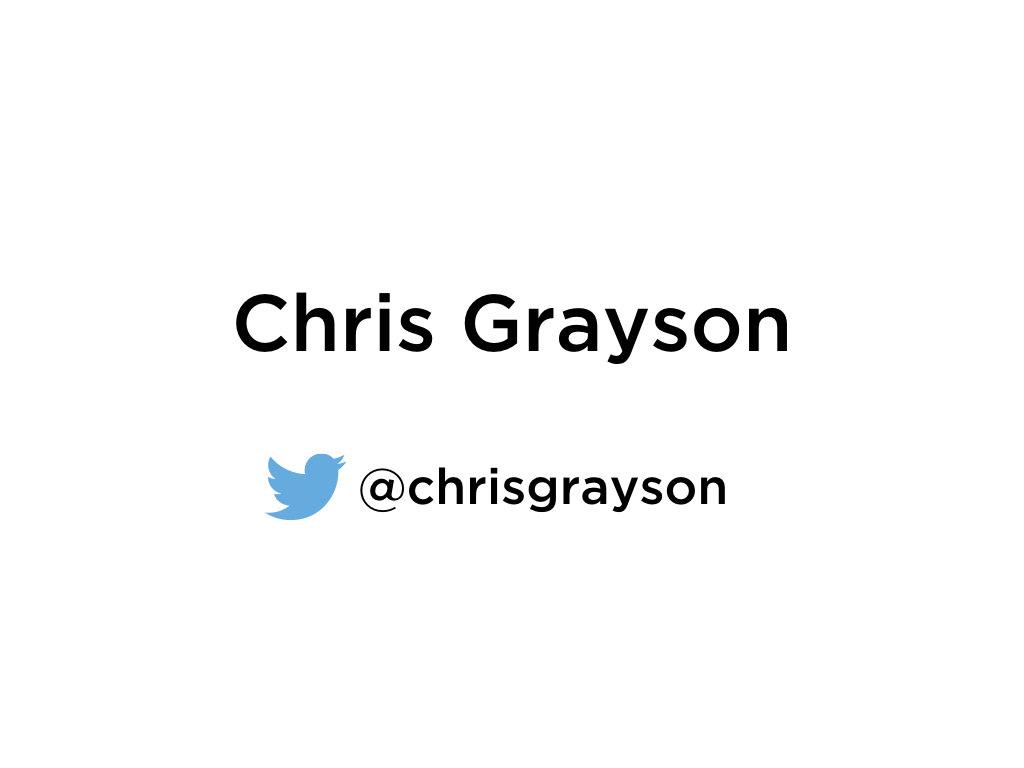
Hi, I am Chris Grayson.
Thank Paul for inviting me, and Goodwin Procter for hosting the event.
I have been in the wearable space for several years, organizing events, as a speaker, and putting together event panels, mostly on the topic of head worn wearable displays.
I have recently departed a wearable tech startup named Telepathy, to start my own.
I am not yet prepared to make any announcements today.
I do not have a company or product to pitch.
I do not have a book to sell.
I have a blank slate.
Paul has given me free license to speak my mind about wearables from a perspective of my choosing.
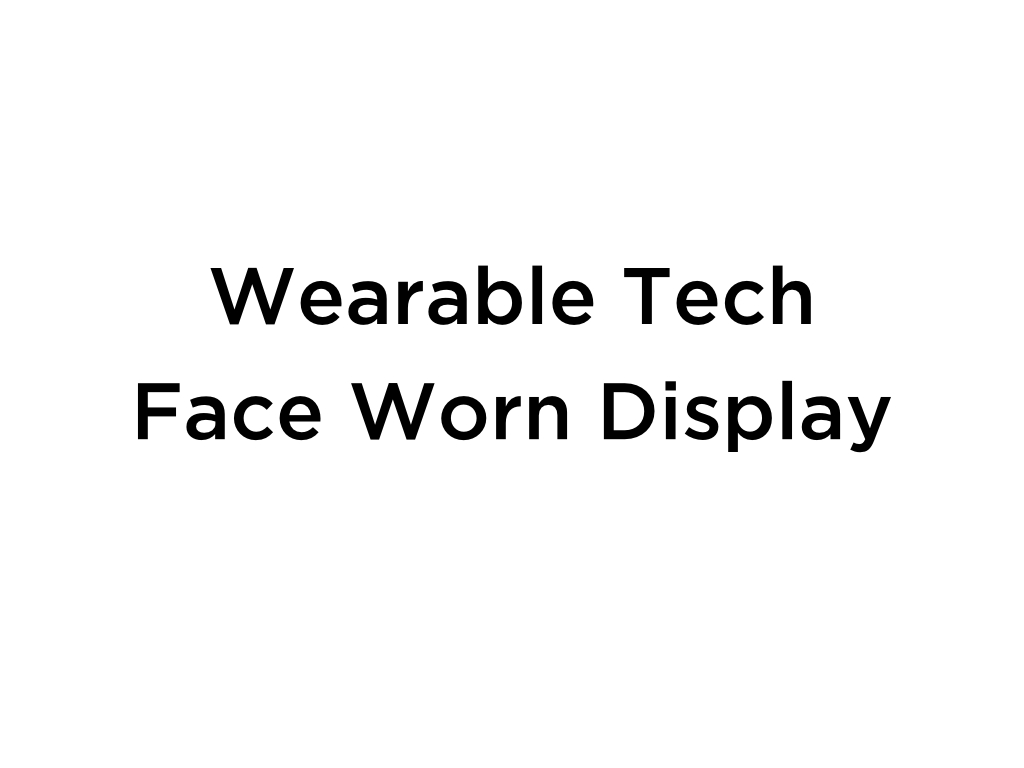
Over the last several weeks I have been meeting with VCs, potential business partners, and exploring all of the different angles and business models in the wearable space. Both for myself, and at the request of potential investors, I produced a document of the thirty-thousand-foot view of the head-worn display systems market …

… covering competitive analysis, various consumer market business models …
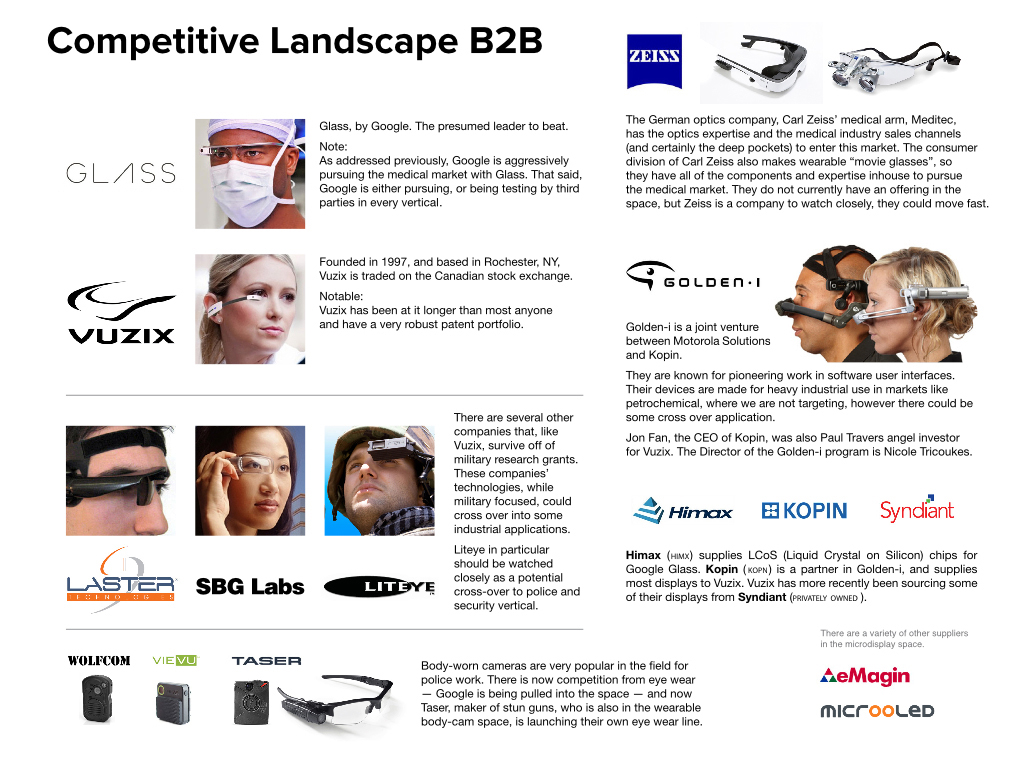
… and the major B2B verticals.
I’m not going to go into the granular minutia of market players, and everything on these slides. Only to say that, if this interests you, my slides will be made available, and you can check them out online.

During this process there was one vertical that gave me pause.
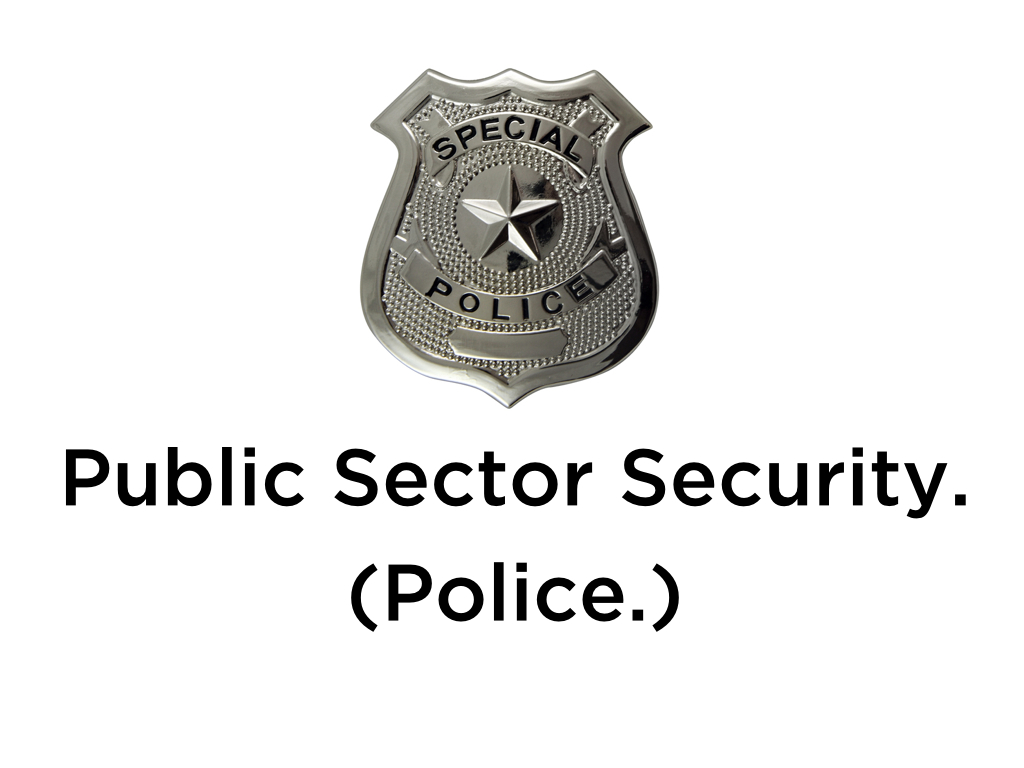
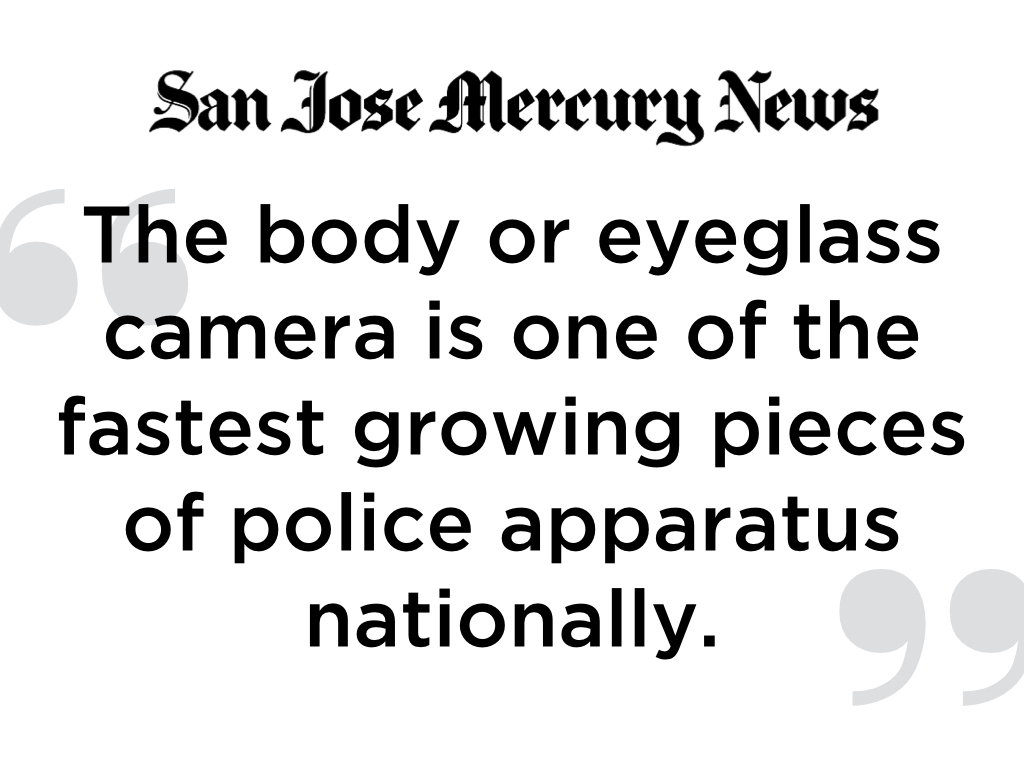
Wearable video devices are a growing market among Police departments.

Bringing up issues of Privilege and Authority.
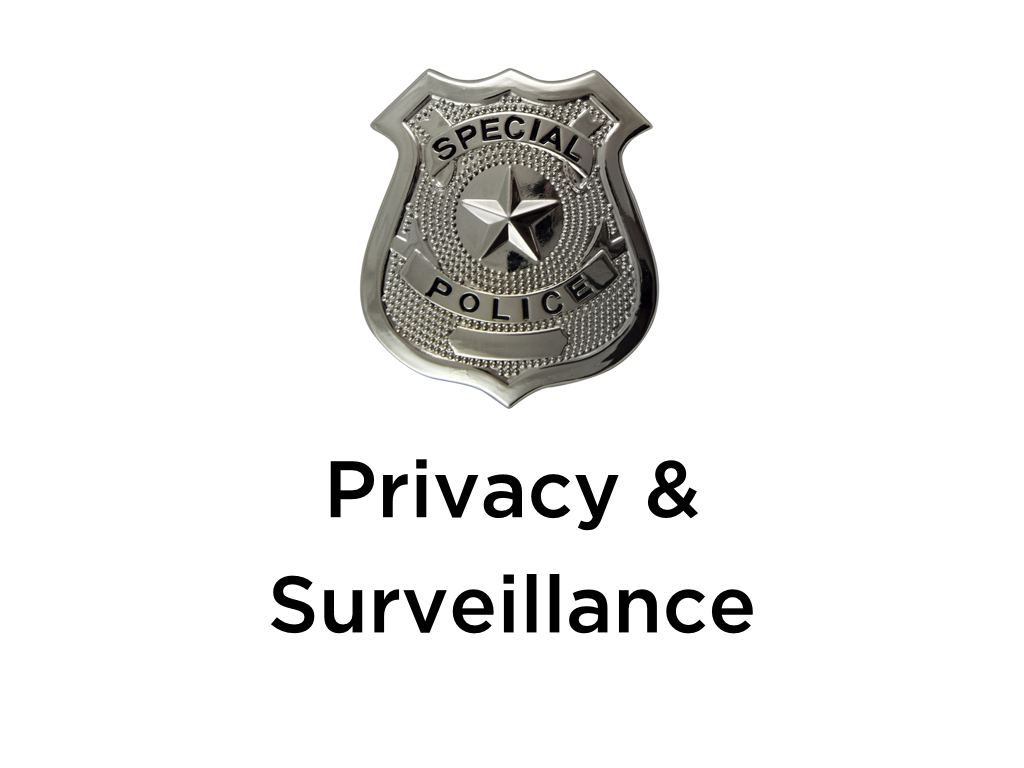
Of Privacy and Surveillance.

Many of the lectures I’ve given over the last several years have been on the subject of Face Tracking and Facial Recognition, and I recognize parallels. [1] [2] [3]

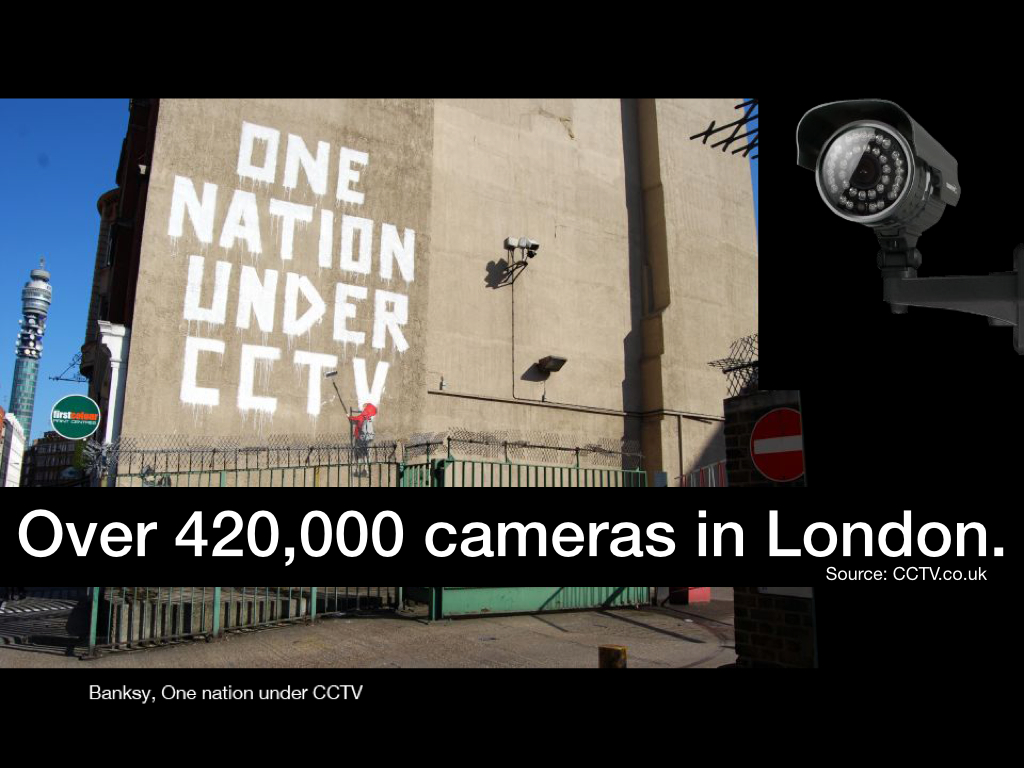
London is the most surveilled city in the word. In security circles, the network is known as The Ring of Steel. Nearly half a million state controlled cameras track every movement of every occupant at all times.

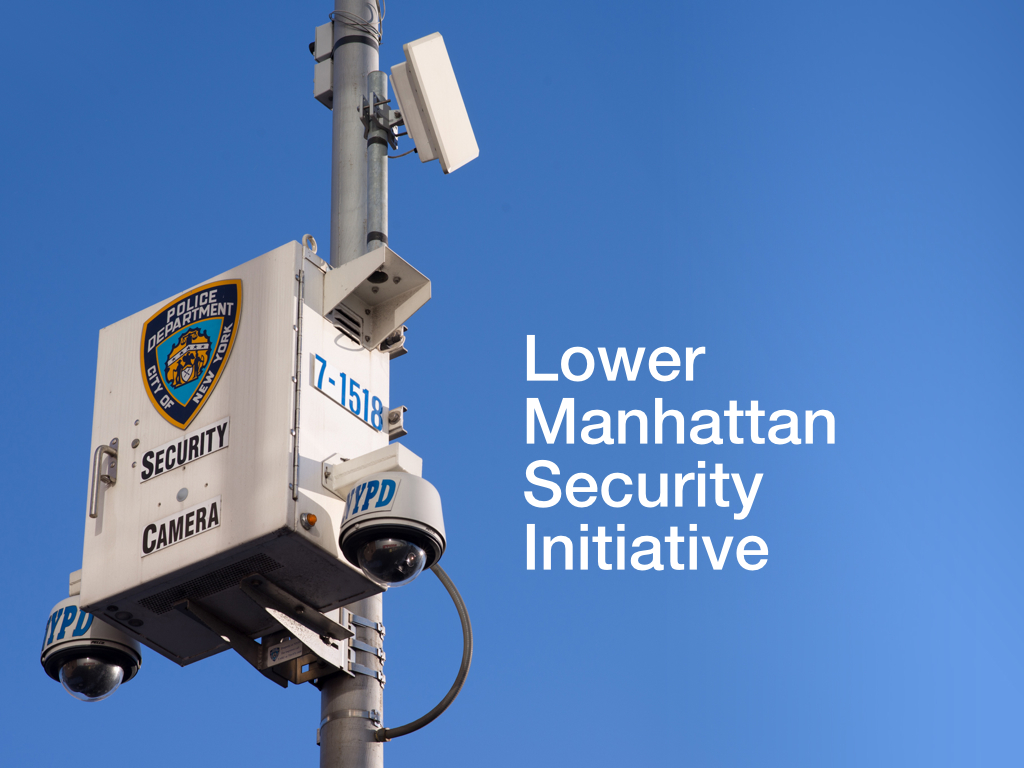
New York City is the most surveilled urban area in the U.S. For the Lower Manhattan Security Initiative, the Bloomberg administration even consulted with some of the architects of London’s system.

Today, everyone living in any modern, first world city, lives inside a digital urban panopticon.
I live 8 blocks North of here, on 49th Street. In this short stretch of 8th Avenue, one can identify about thirty or more security cameras just in this short walk.
Of course, in this proximity to Times Square, that should be expected. There are probably fewer more surveilled plots of land in the world.
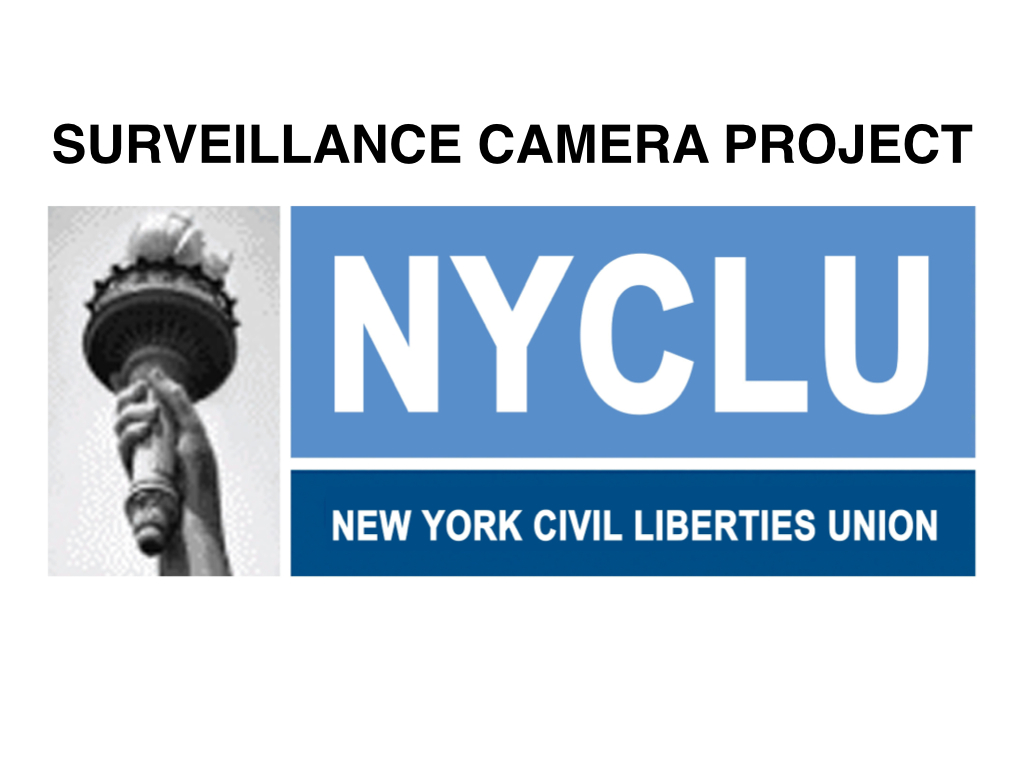
Back in the late 90s, the New York Civil Liberties Union became alarmed at the proliferation of surveillance cameras in Manhattan, and more so, that nobody knew how many there were, or who they belonged to. There were cameras installed by the federal government, state government, city government, private security services, street front small businesses, news camera weather cams and traffic cams … so they initiated a project called the New York Surveillance Camera Project, enlisting volunteers to identify and map all the surveillance cameras in New York City.
 |
|
 |
|
[See Video]
In the early oughts, an art consortium of sorts sprung up calling itself The Institute for Applied Autonomy. They took the data collected by the Surveillance Camera Project, put it into a database, and created an online app that would let you enter your point of departure, your destination, and then plot out a route charting your “Path of Least Surveillance” through Manhattan. There were few routes that did not encounter at least a few cameras, often with hilarious circumnavigated routes, steering the user far off course, in order to lower their camera count.
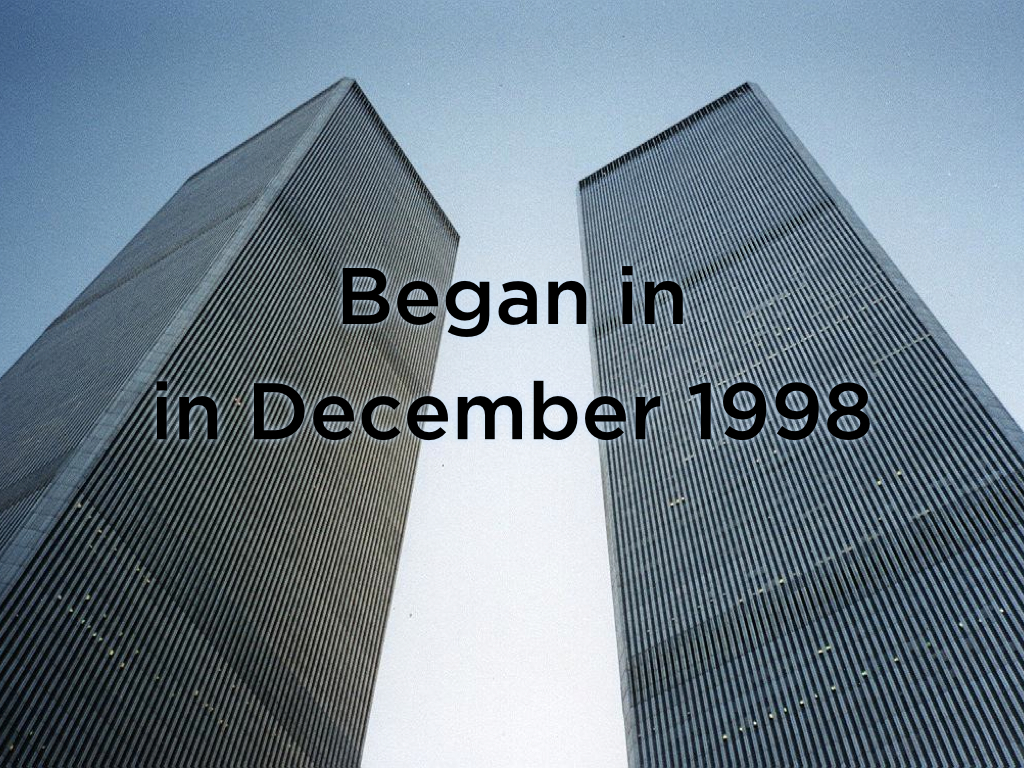
But in spite of the brilliant execution, the timing was bad.
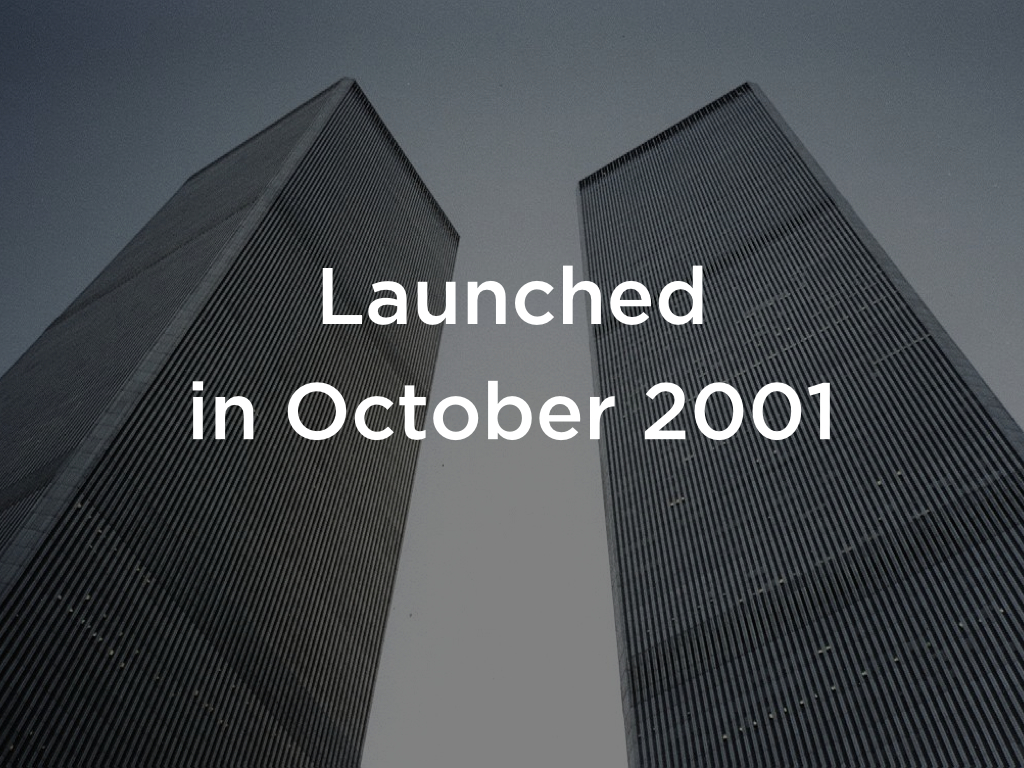
While the Civil Liberties Union’s Surveillance Camera Project began in 1998, it was a slow, volunteer run project that took years to complete.
By the time the Institute of Applied Autonomy had databased all the information, their app launched in October 2001. The month following the tragedy of September 11th. Priorities changed.
The New York Civil Liberties Union abandoned the Surveillance Camera Project, and The Institute for Applied Autonomy abandoned their iSee App.
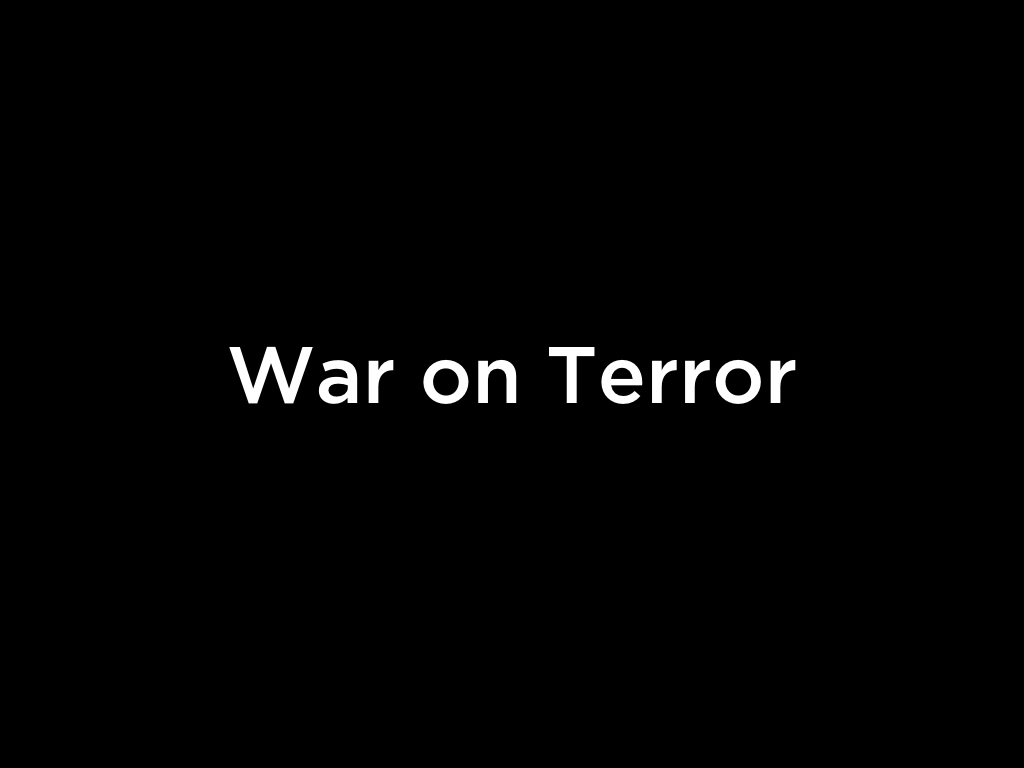
With the beginning of the War on Terror, the Federal government quickly made funds available to help municipal police forces kit-up, and train their teams in paramilitary defense techniques.
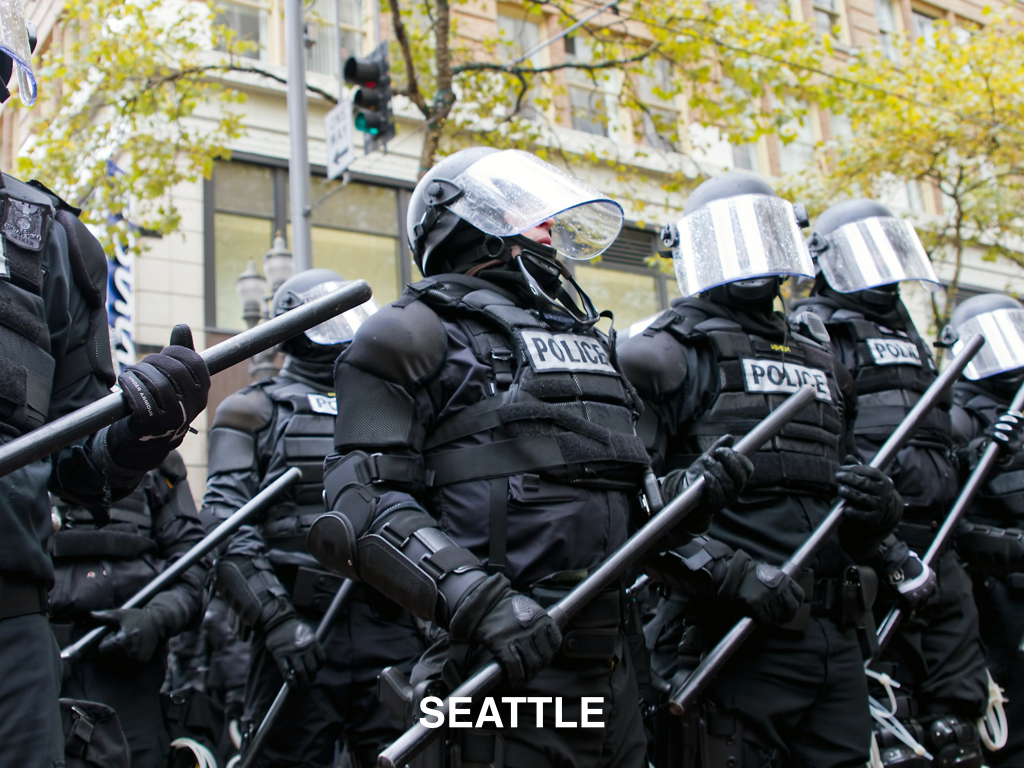
Soon major U.S. cities had large battalions of Riot Police …
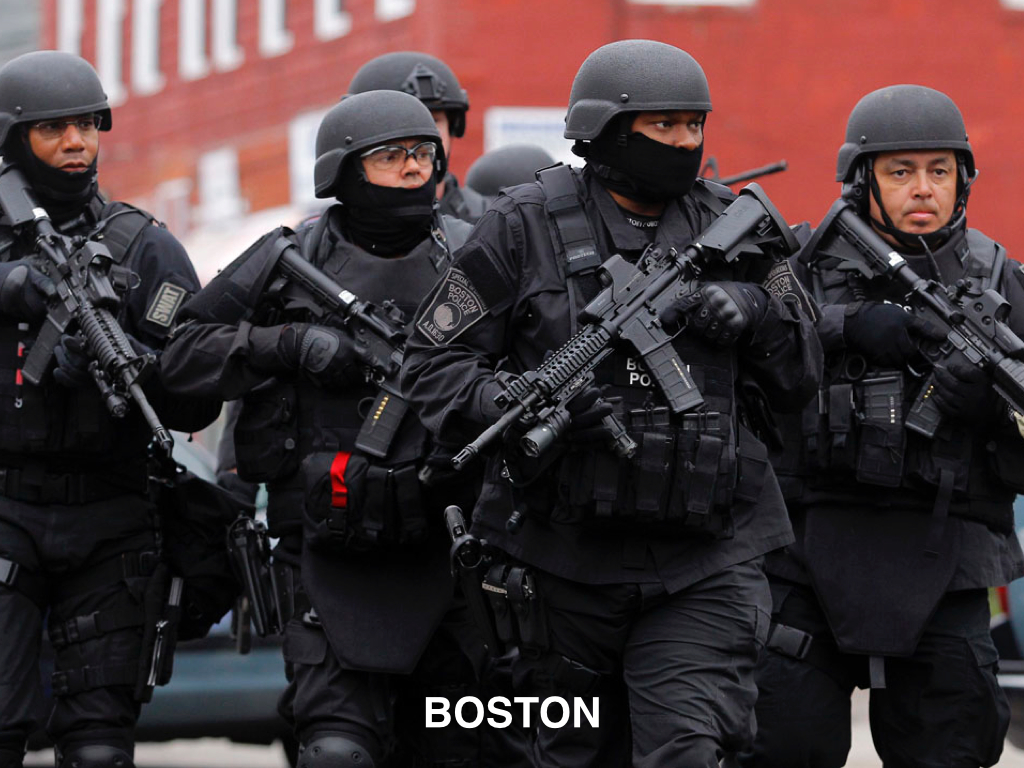
… and Swat Teams.
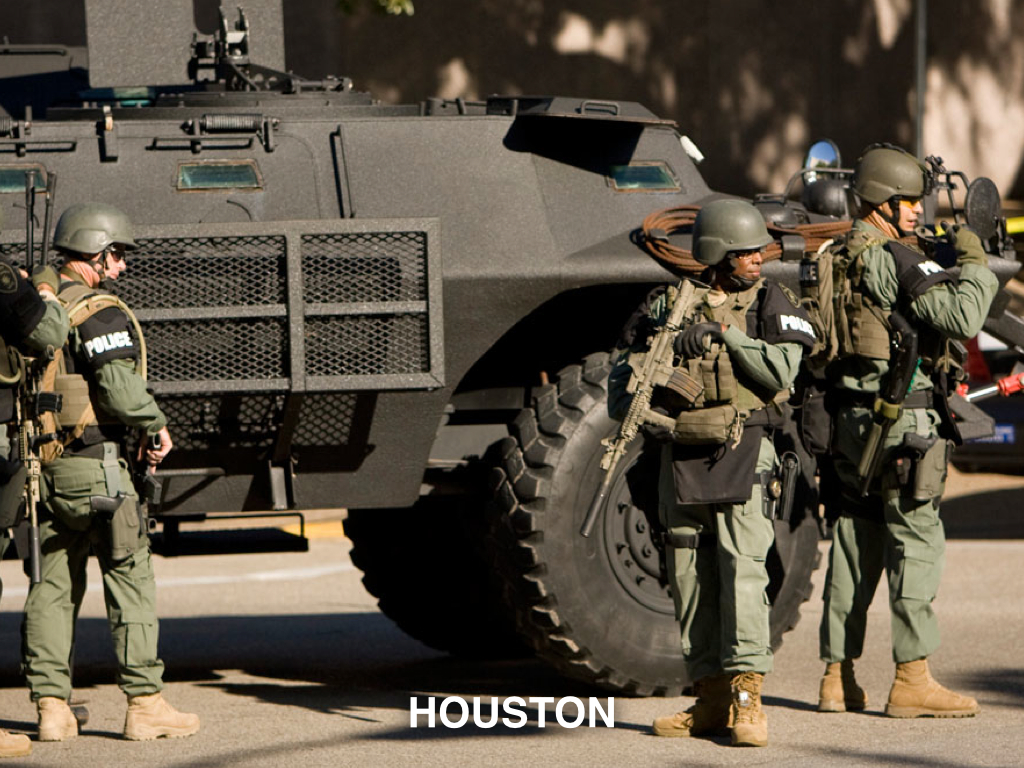
In some U.S. cities it became difficult to distinguish between the local police and military soldiers.
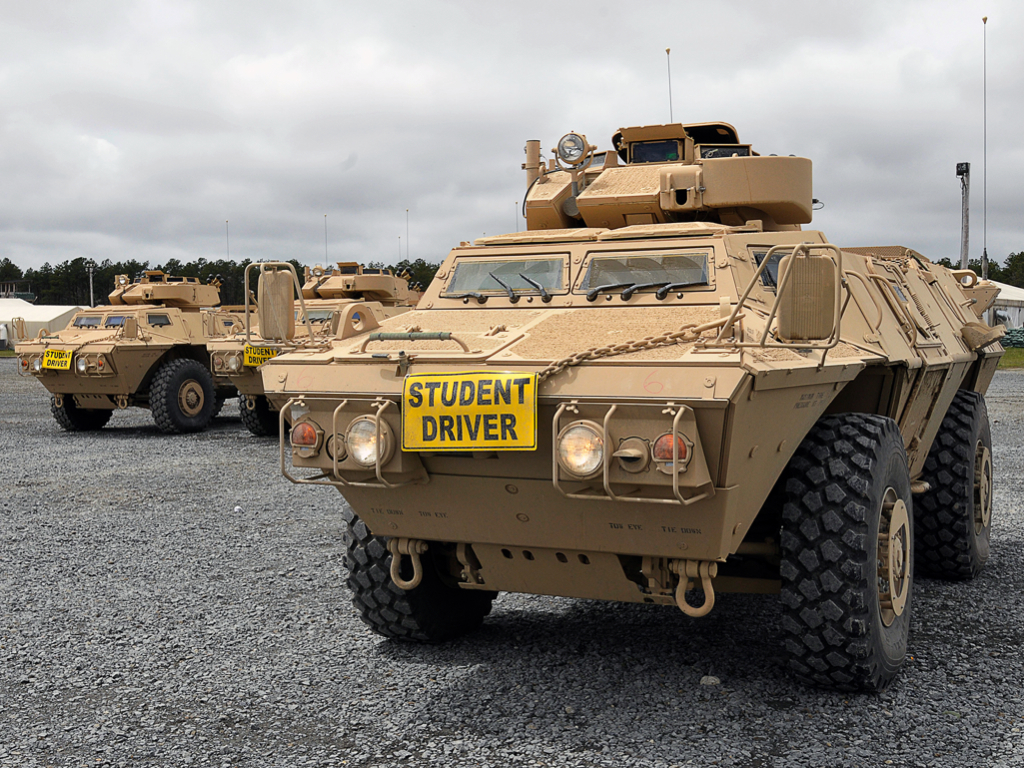
After a decade of wars in Afghanistan and Iraq, the Pentagon found itself with a surplus of military hardware. Using a program know as “1033” (Department of Defense Excess Property Program), much of this hardware began to be dispersed, for free, to various police departments throughout the country …
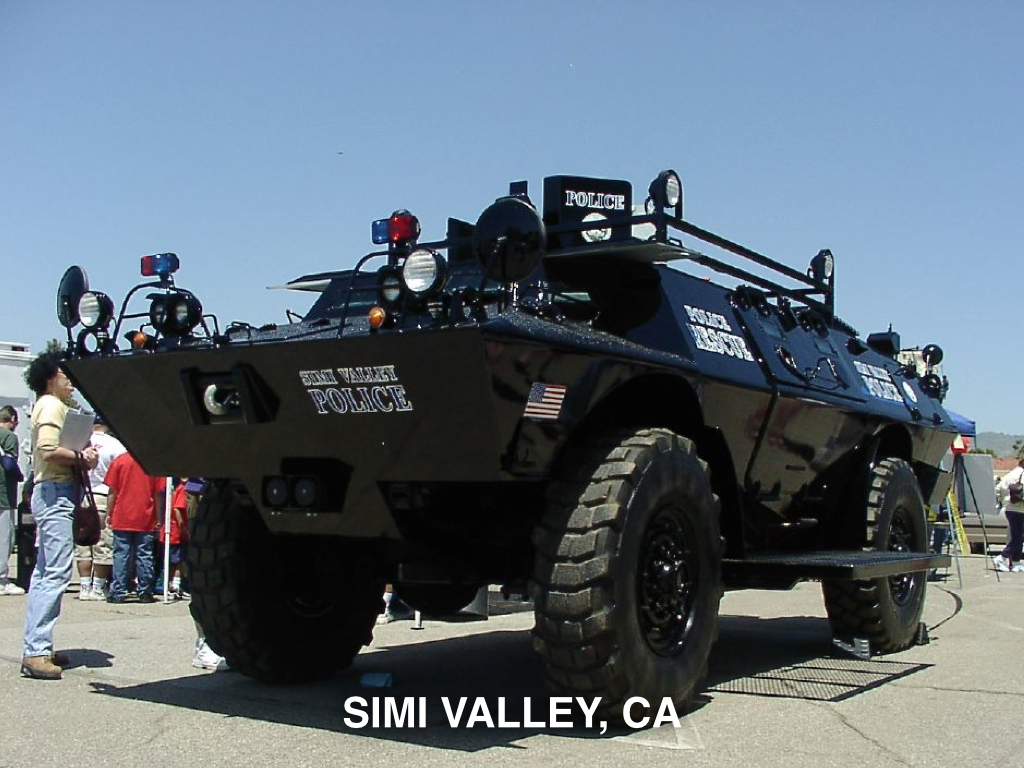
… much of it to smaller towns. In places hit hard by the recession, where budgets are tight, it is understandable why a small police department would accept a heavily armored military vehicle in place of spending money on, say, a new bus or truck.
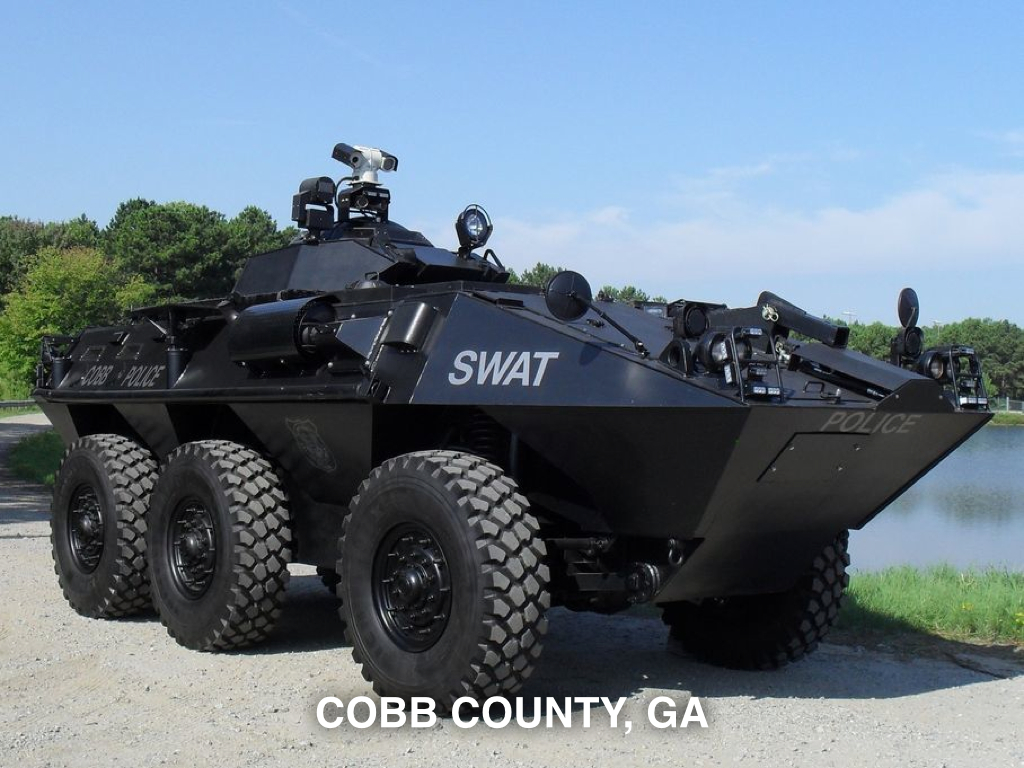
Georgia was especially rewarded by this largess. This is the kind of gear you can see patrolling the roads now, in some small southern towns.
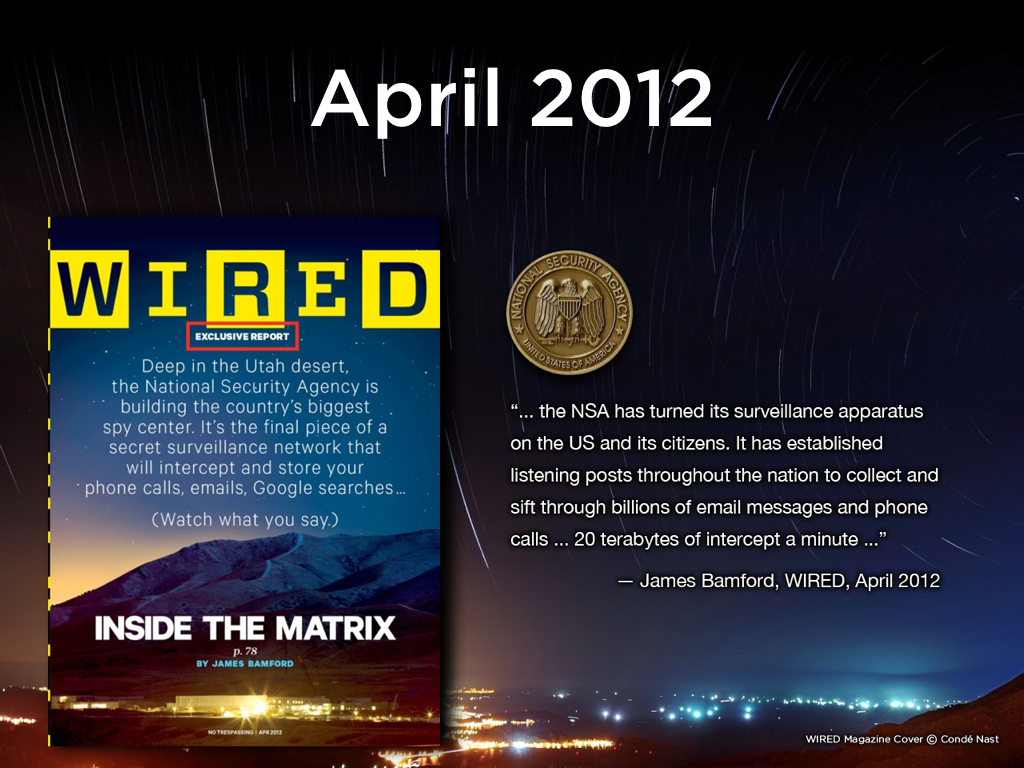
Meanwhile, also as a result of the “War on Terror” the NSA has been given largely a blank check, and potential abuses glossed over, given the presumption that rules need to be bent, in order to keep citizens safe.
In April of 2012, WIRED Magazine broke the story of the NSA’s top secret, an innocuously named, “Utah Data Center,” in a story by James Bamford, the writer who, decades before, exposed the secret organization’s very existence (in its earliest years, the U.S. government denied that the NSA even existed.).
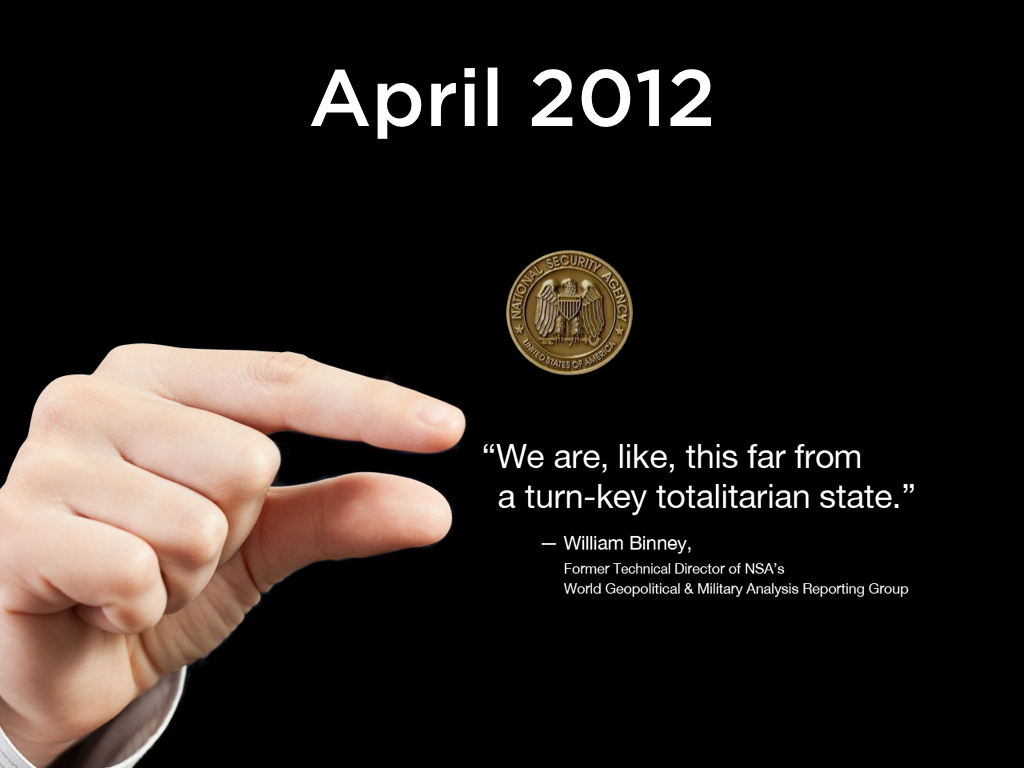
In this same issue, former NSA department director, William Binney, made his famous quote that we were, “This far from a turn-key totalitarian state.”

… and that was all a full year before Edward Snowden’s revelations.
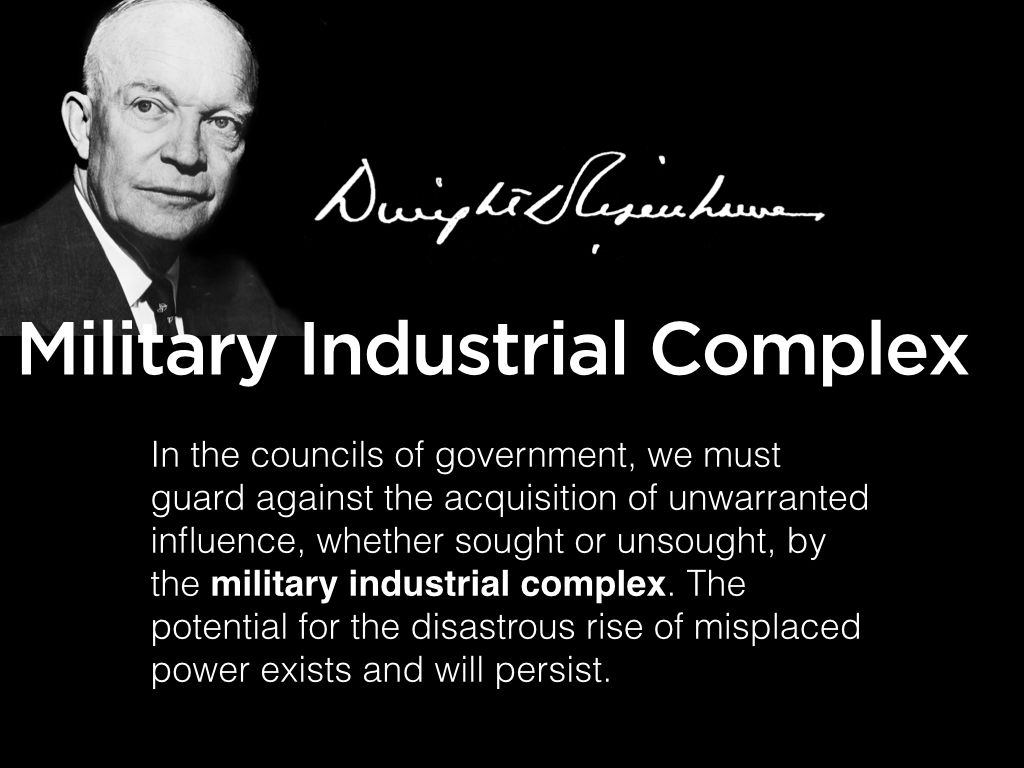
In President Eisenhower’s famous “Military Industrial Complex” speech, he chose his words carefully. He referred to “unwarranted influence, whether sought or unsought.”
Note that in laying out this narrative, there is no need for any widespread conspiracy that got us to this place. We got where we are through a series of bad and reactionary policy decisions, poor training, mis-prioritization … I repeat this point because, when researching the subject of government power, police power and a free society, it is easy to come into contact with fringe thinking, and conspiratorial theories, when all that is needed to get where we are, is a mix of poor decisions and bad incentives.

Today the United States has the highest incarceration rate of any country in the world.
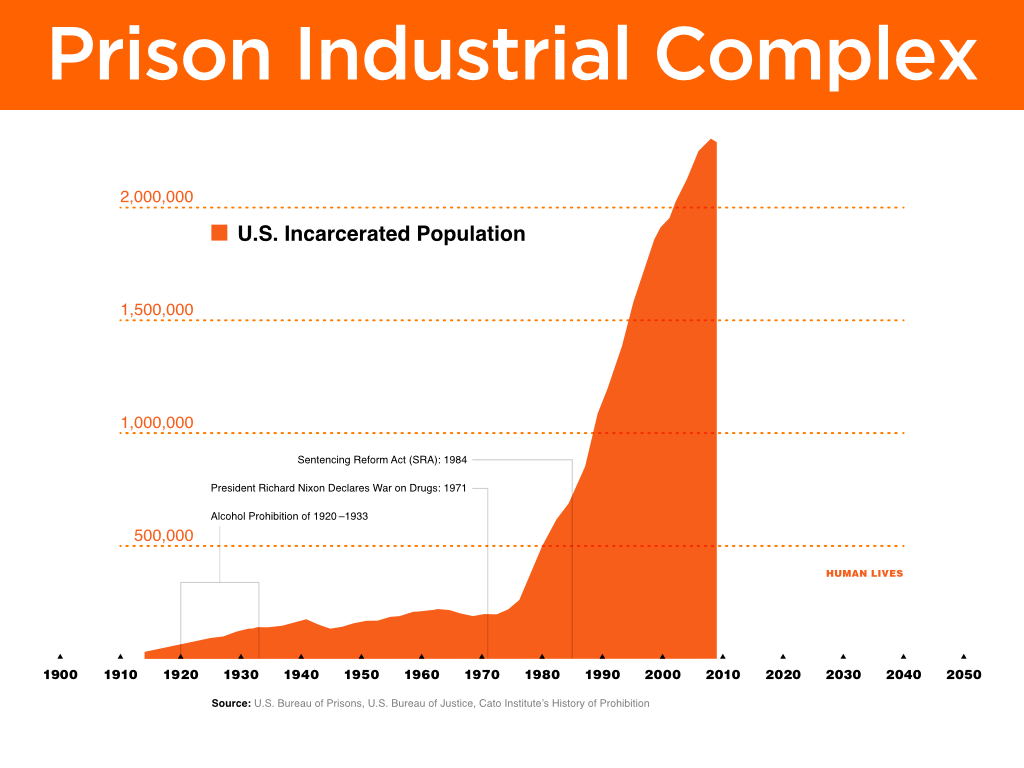
On a parallel path to the War on Terrorism, we’ve busied our police with also fighting a “War on Drugs.”
An initiative meant to save society from the ravages of drug addiction that has caused the number of U.S. citizens imprisoned to explode exponentially.
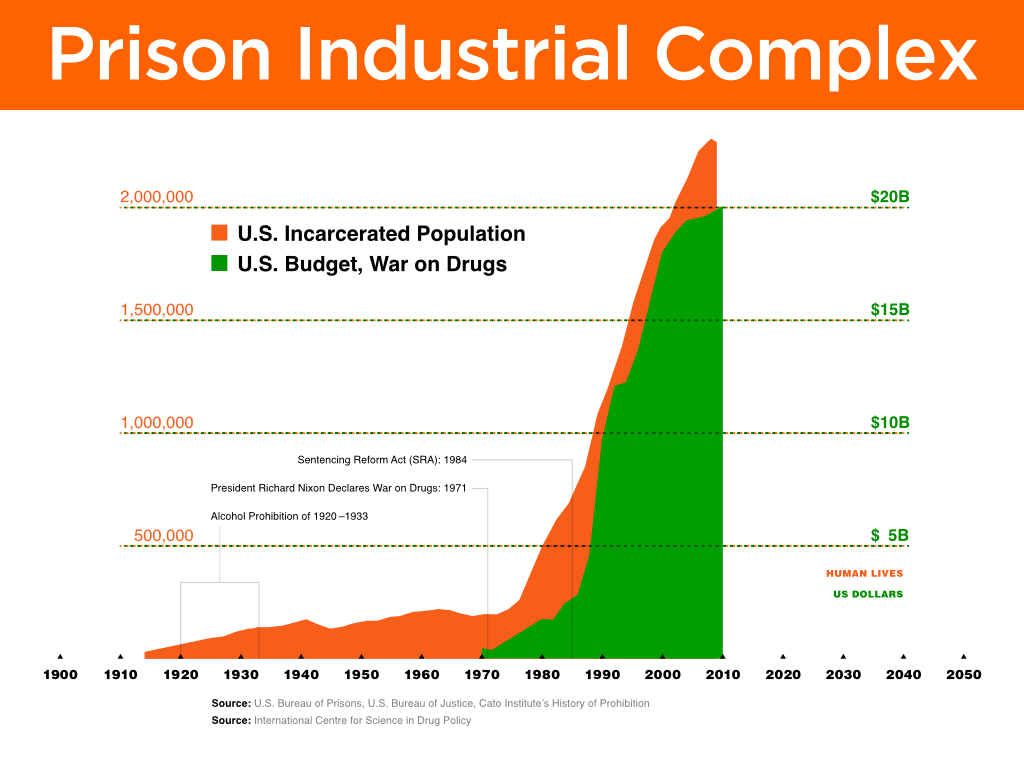
Over the last three decades this practice has cost tax payers hundred of billions of dollars.
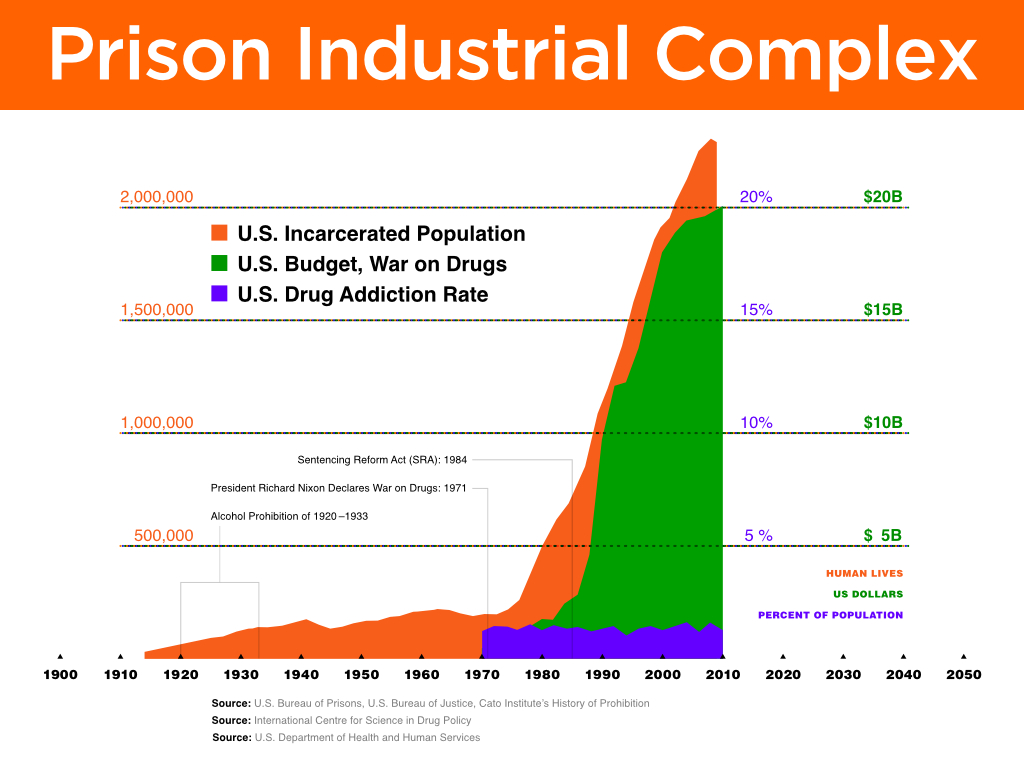
While drug addiction rates have otherwise remained unchanged.

It’s also worth noting that there is no correlation between incarceration rates and the rate of violent crime in the U.S. Most drug related felonies are nonviolent possession offenses.
I see a positive development in this chart: the data I am using ran through 2009, the first year in decades where our incarceration rate showed a small tic of decline.
Given the number of states decriminalizing marijuana for medicinal, and even recreational use, and further action by Colorado Governor, to both release from prison, and expunge the records of prisoners held on nonviolent marijuana related charges. Preferably other states will follow suit, if for no other reason than the cost savings.
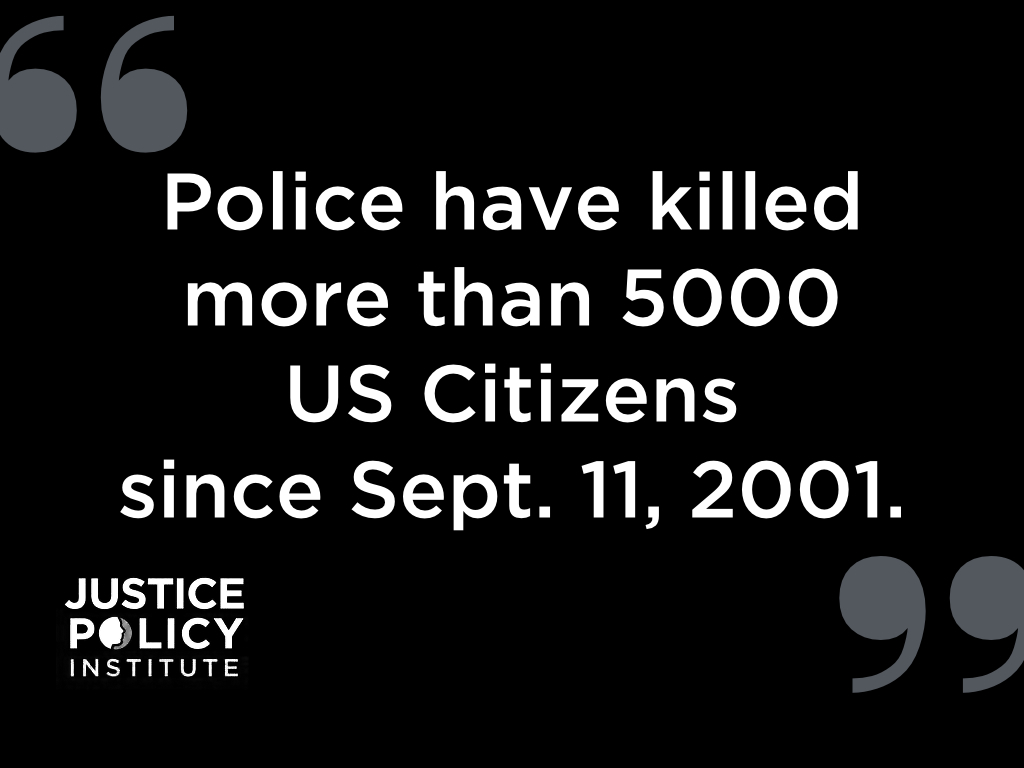 |
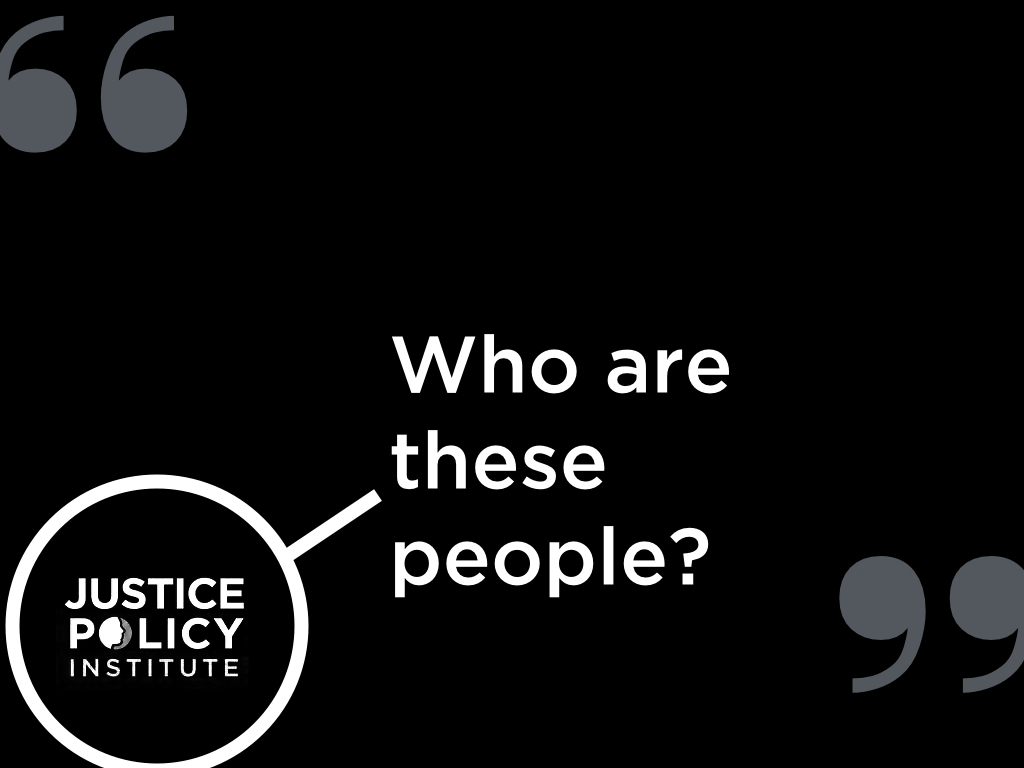 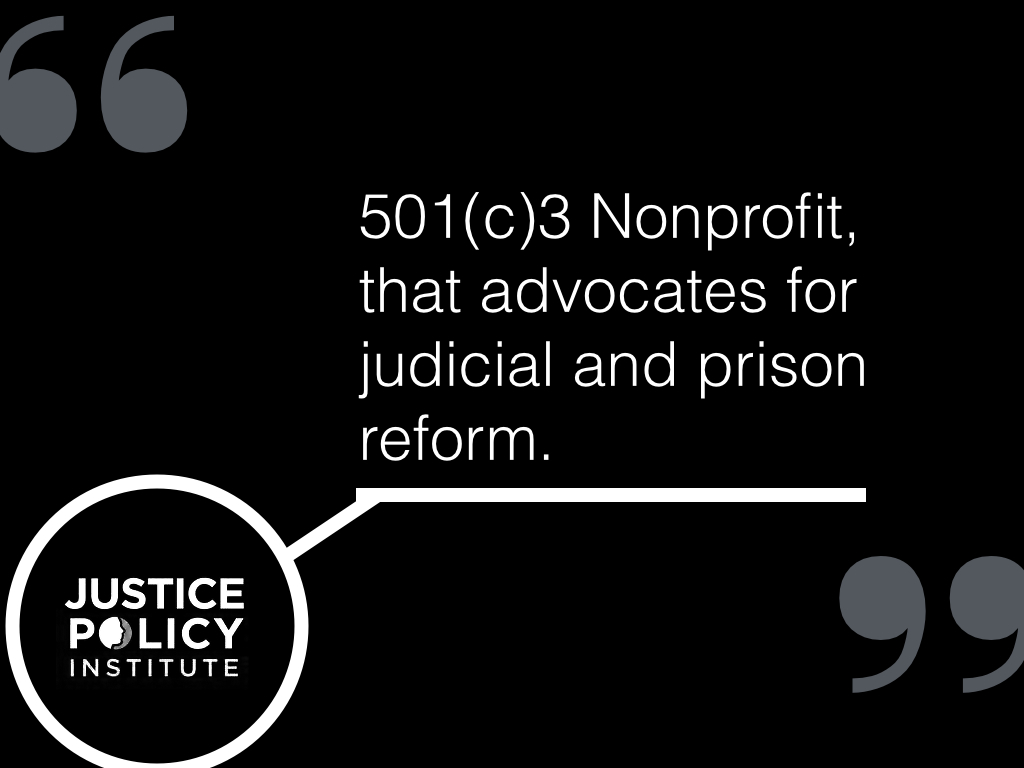 |
A group calling itself the “Justice Policy Institute” has made the astonishing claim that police in the U.S. have killed more than 5000 of our own since the War on Terror began. You can read a lot of things out on the internet, and it is easy to fall victim to confirmation bias. So I did some homework. It turns out, the FBI does not keep any records of the number of people killed by police (I found that equally as astonishing as the claim itself). So the Justice Policy Institute did research based on news reports over the past decade. Because all news reports for all regions, and all cities, across all dates could not be accounted for, some extrapolation was involved in arriving at their number. Without a better understanding of their methodology, I’m not going to vouch for the veracity of their claim. But it turns out that it is not out of line with other findings.
 |
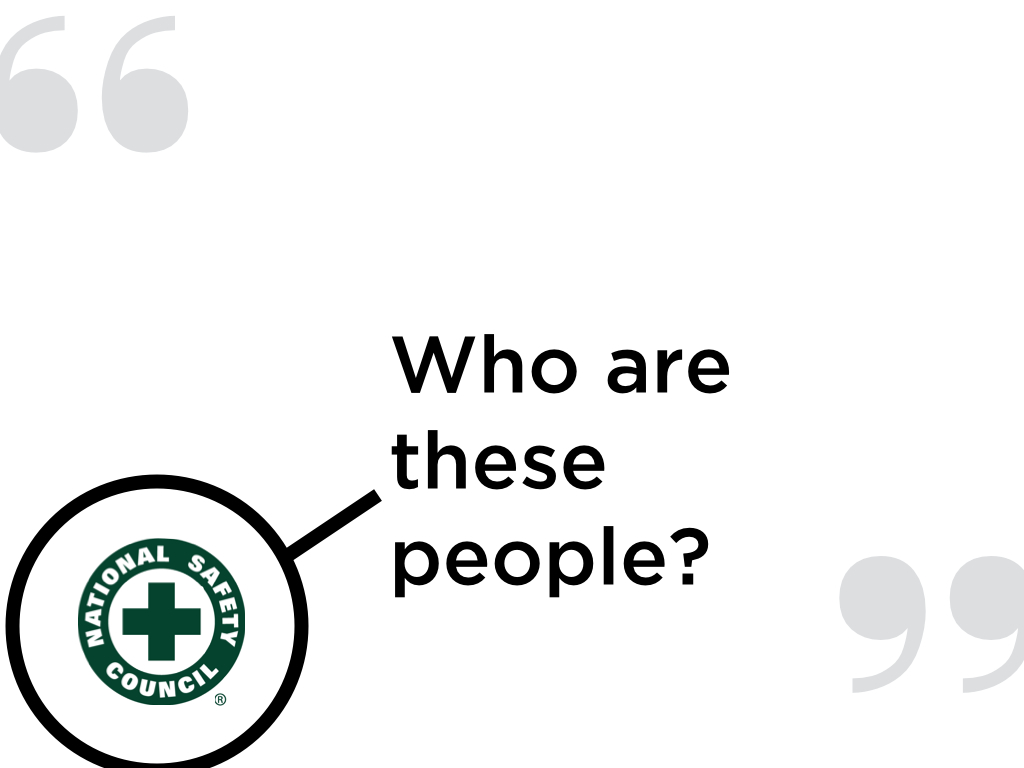 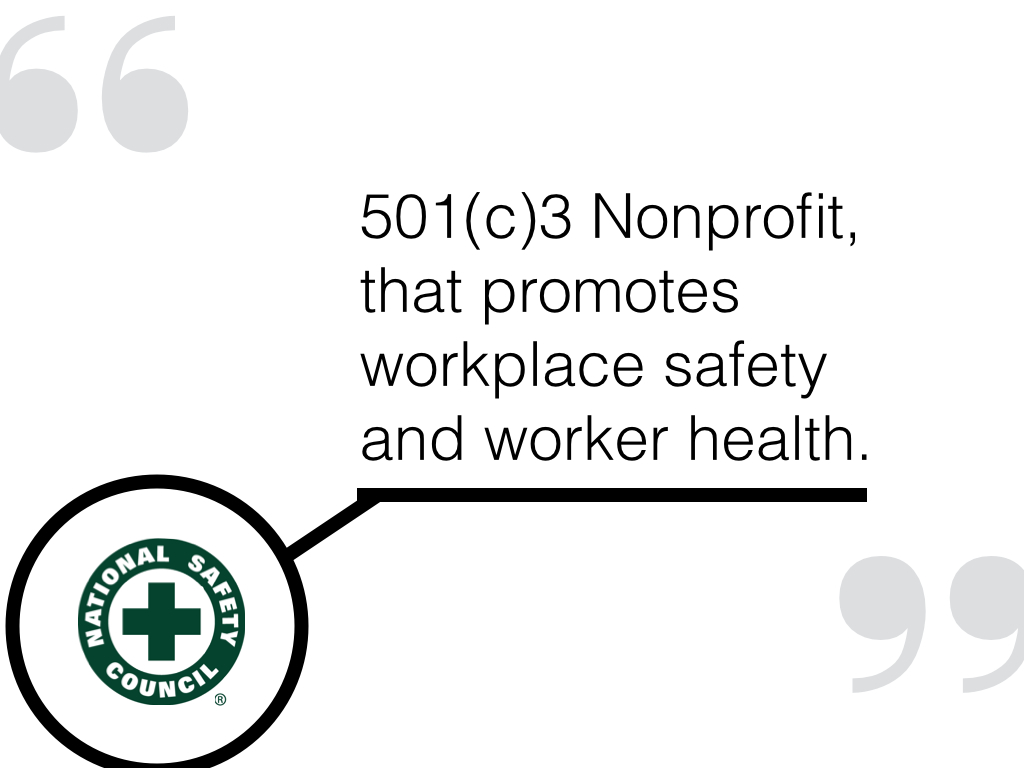 |
Another organization, the National Safety Council, has been frequently quoted for the claim that, “You’re 8 times more likely to be killed by the police, than to be killed by a terrorist.” This one got a lot of traction after it was tweeted by a member of The Cato Institute, and later written about on the organizations website. The National Safety Council’s numbers appear to be a straight forward application of actuarial statistics as they might be used by an insurance company, and the claim was taken from a study meant to show how people overestimate some risks, while underestimating others — Americans take all kinds of precautions against terrorism, yet never exercise, and eat junk food, while they’re 17,600 times more likely to die from heart disease than from a terrorist attack.
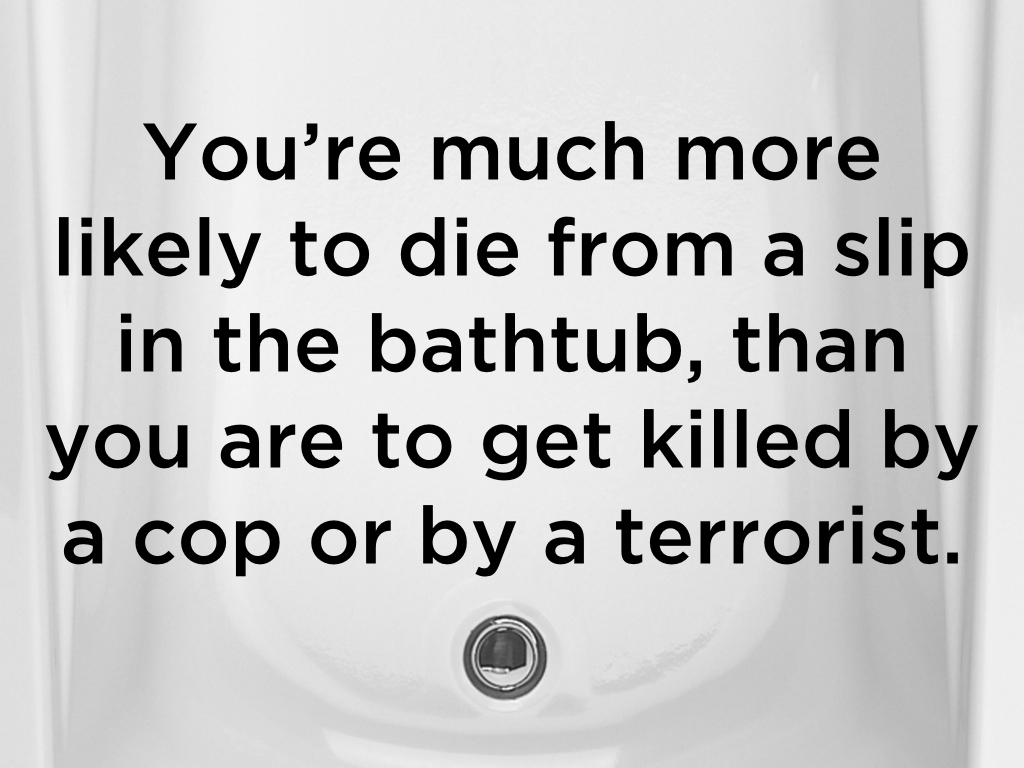
But let’s keep things in perspective. The truth is, you’re highly unlikely to die from either a terrorist, or from being killed by the police.
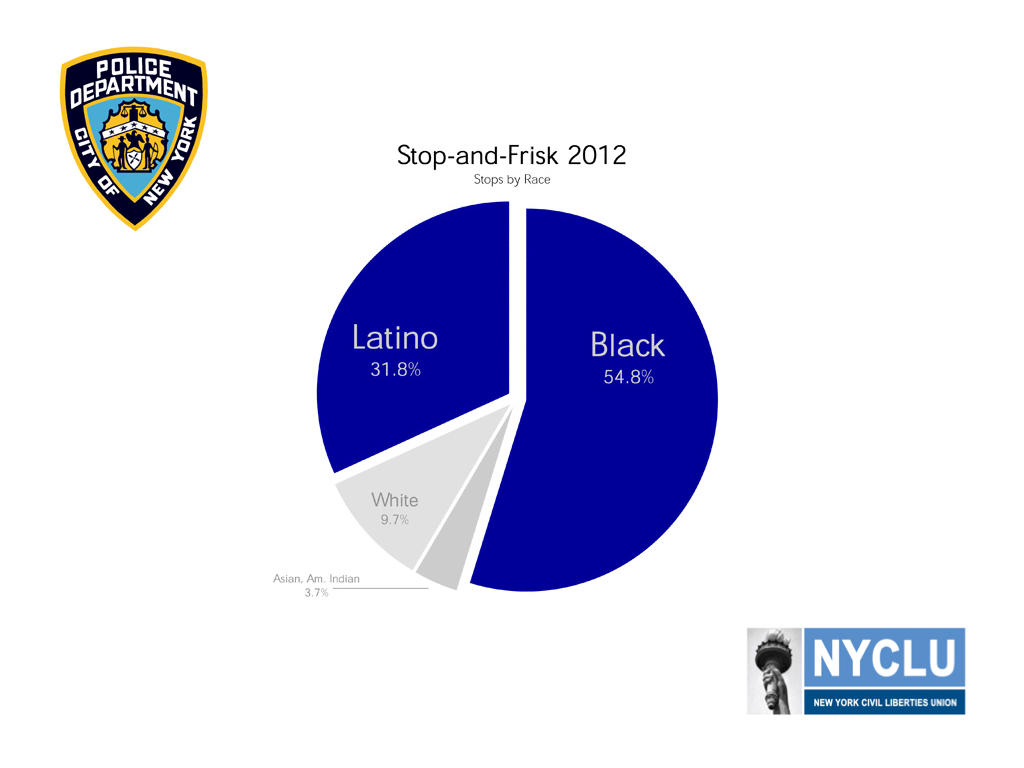
Of course, not everyone’s odds of being harassed by the police are equal.
In an effort to cut down on illegal guns, the city of New York implemented a controversial program known as “Stop and Frisk.” In August of last year a Federal Appeals Court ruled the program to be unconstitutional.
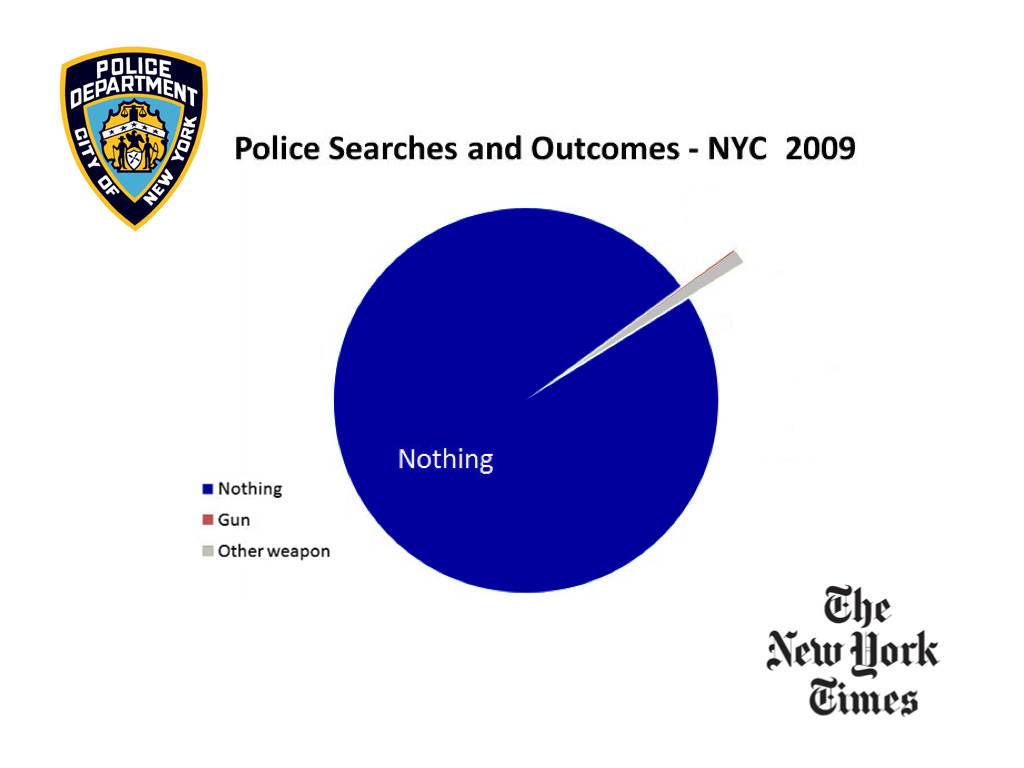
Police have been extremely vocal in defending the practice. This could be understood better if it were delivering results. With a purported goal of lowering gun crime, and confiscating illegal guns, it has also been a failure.
The practice has now been shown to be both unconstitutional, and ineffective. Though the courts have given police latitude in continuing the practice with judicial oversight, while the city appeals the ruling, the practice has already been on the declined. It reached its peak in 2011 when over half a million New Yorkers were stopped in one year. Current numbers hover around a hundred-and-fifty thousand.
As a pet program of former mayor Bloomberg, the recent change of mayoral administrations may also seen the practice in decline. All signs are not positive, however. Federal court judge, Shira Scheindlin, who presided over the ruling, was promptly removed from the case, under what could charitably be called, unusual circumstances.
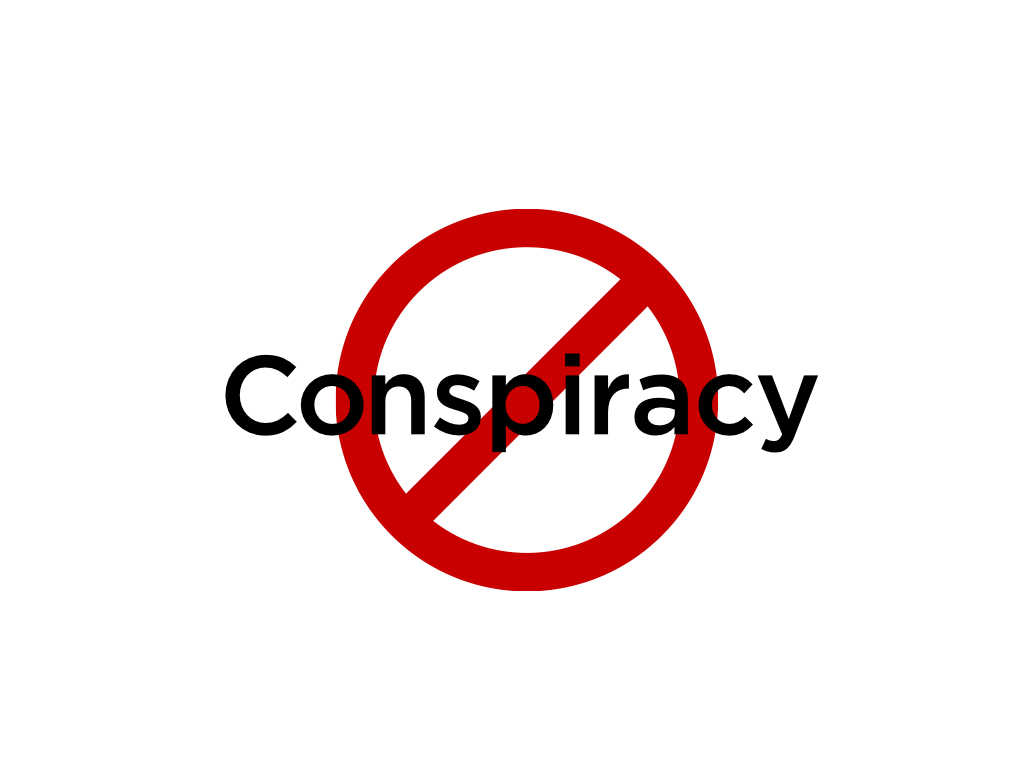
None the less, the circumstances we find ourselves in should not be viewed from a conspiratorial perspective. There is no plot. There is no unseen hand.
We have arrived at this place largely through a combination of circumstance, reaction to circumstance, bad policy decisions, wrong incentives, and poor training.
While the greatest allies to cutting incarceration rates could be state legislatures looking to cut costs (for most states, maintaining state prison systems is one of their top three budget items) — by contrast the greatest hurdle could come from policemen’s unions and prison workers unions, whose jobs would be slashed by such a move.
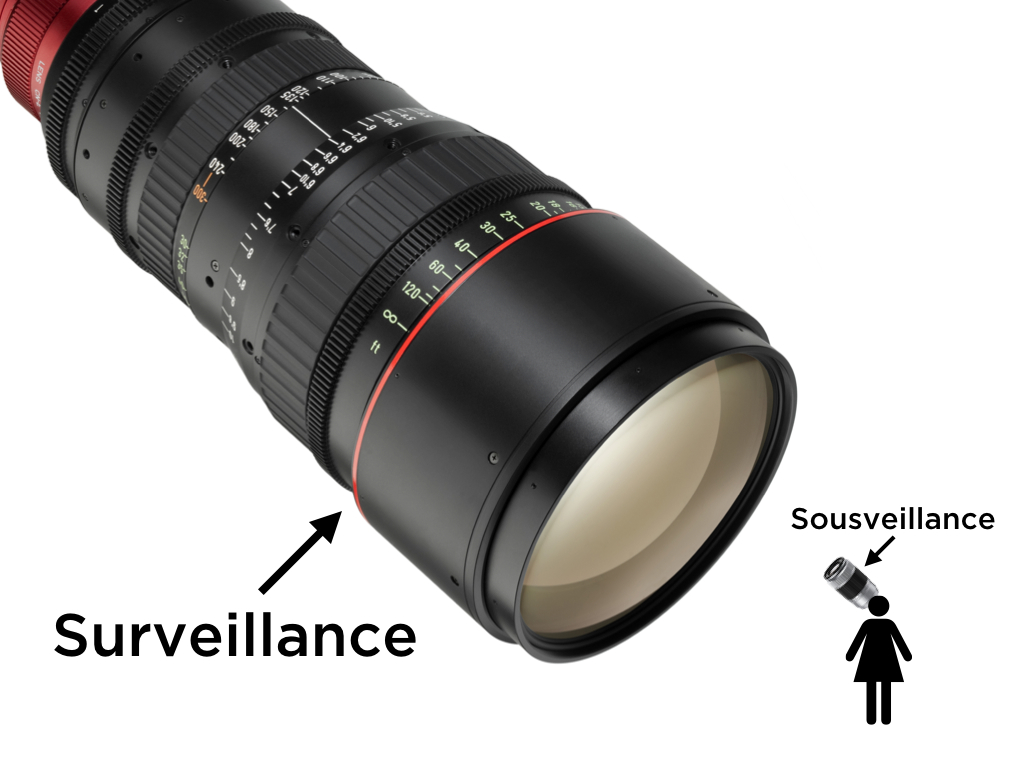
Police head-cams and body-cams are not a surveillance problem, but a transparency solution.
The word “surveillance” is derived from Latin meaning, “To watch from above.”
There is a fellow named Steve Mann who, back in the 90s, founded the MIT Wearable Computing Lab. Today he is a professor at The University of Toronto.
Steve Mann coined the term “sousveillance”, which in Latin means, “To watch from below.”
While it is easy to view all state controlled cameras as surveillance. I would like to suggest that police worn cameras are, in fact, not a form of surveillance, but rather a form of “sousveillance.” While any given one of us may have very few encounters with police that would be recorded on such a device, the policeman wearing such a camera has his actions recorded at all times.
 |
|
 |
|
 |
|
[Video Above]
In the local news there has been a recent story of New Jersey DJ, Marcus Jeter. He was found guilty of assaulting a police officer and various other charges, and was about to be sentences, with a maximum 30 years, when an additional camera view was discovered to have been suppressed from evidence by the prosecutors, and this proved clearly that the police had lied.
That is the transparency that body-cam and POV head-cam footage will bring.
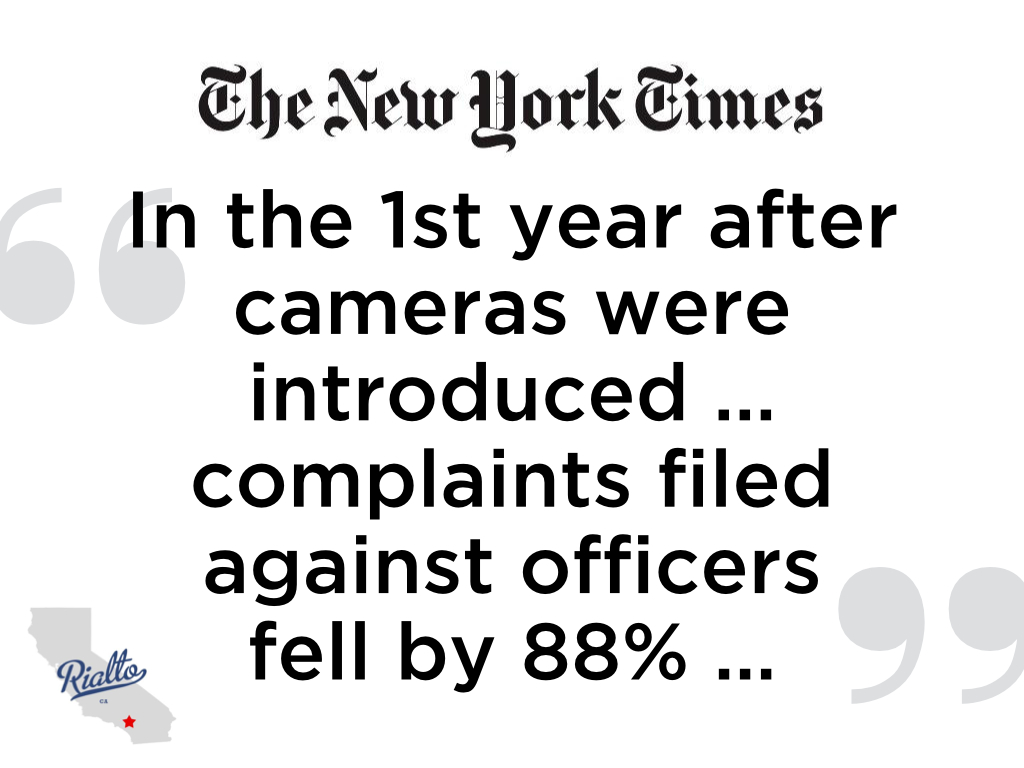
The only large scale study of police wearing body-cams was done in the city of Rialto, California.
In one year complaints filed against the police dropped by 88%.
The police there have attempted to spin the story, claiming that this shows that people make false claims, and now that they have cameras, people drop their complaints.
But a second statistic shows this to be otherwise …
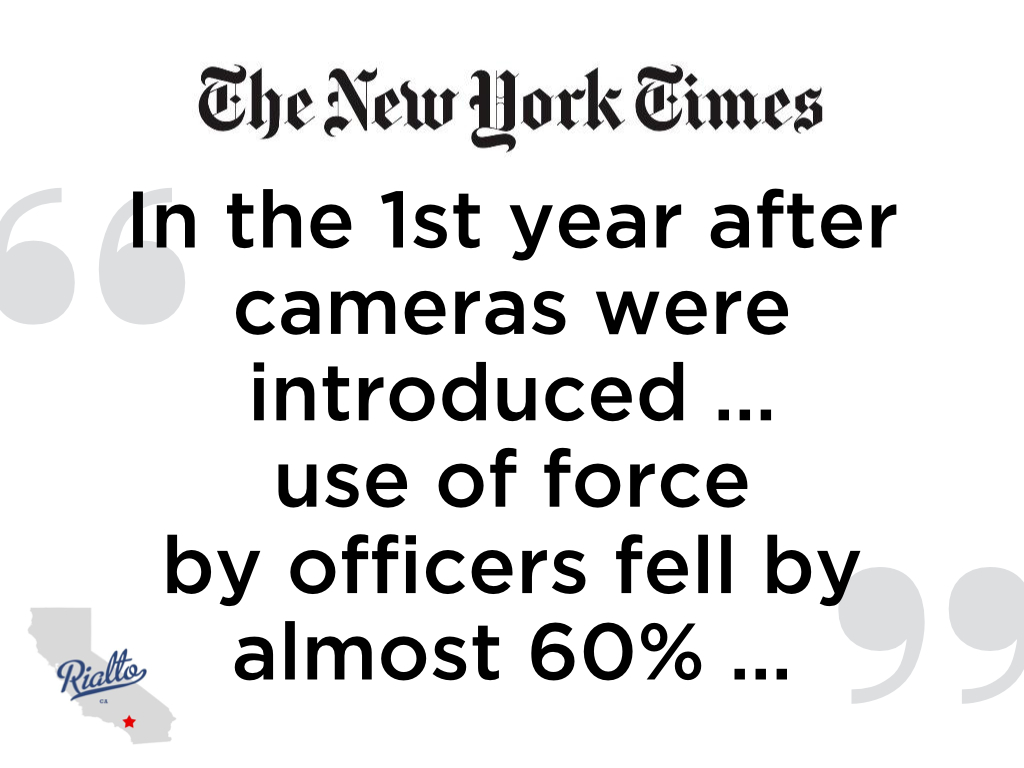
… not only did complaints fall by 88%, but use of force also dropped by 60%.
In short, when on camera, police are on their best behavior.
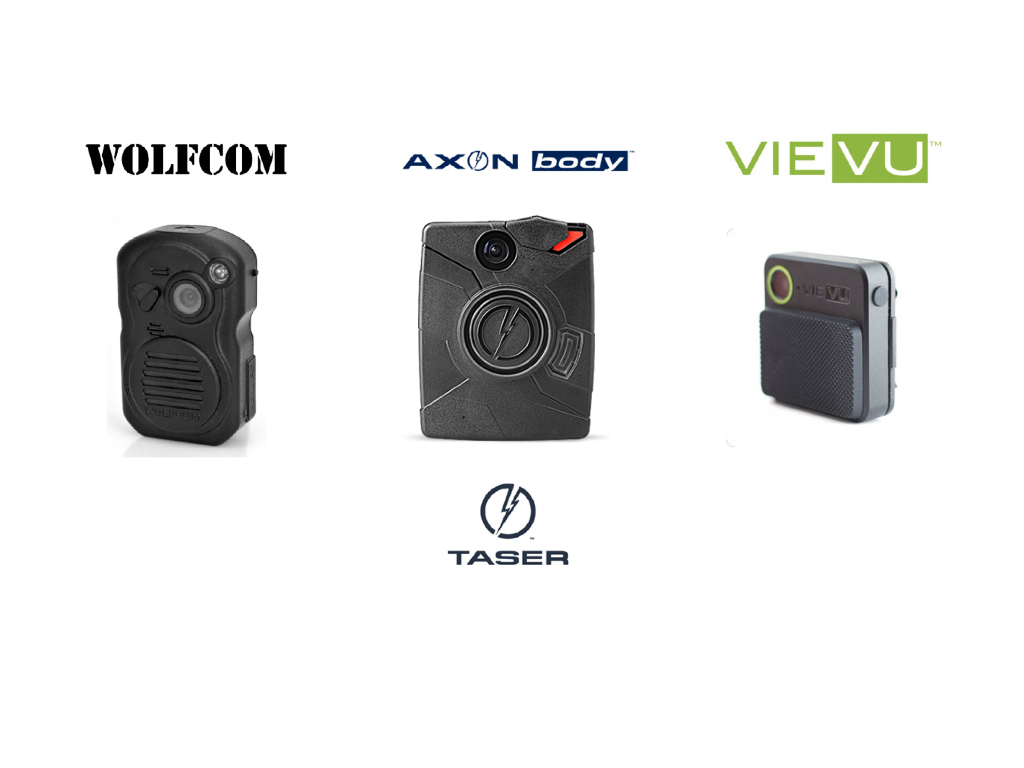
The market for police body-cams is already highly competitive, with Taser brand body-cams leading the market.
Yes, that Taser — maker of stun-guns so ubiquitous that their brand name, “Taser”, has become synonymous with the stun-gun product category. Don’t Tase me, bro’!
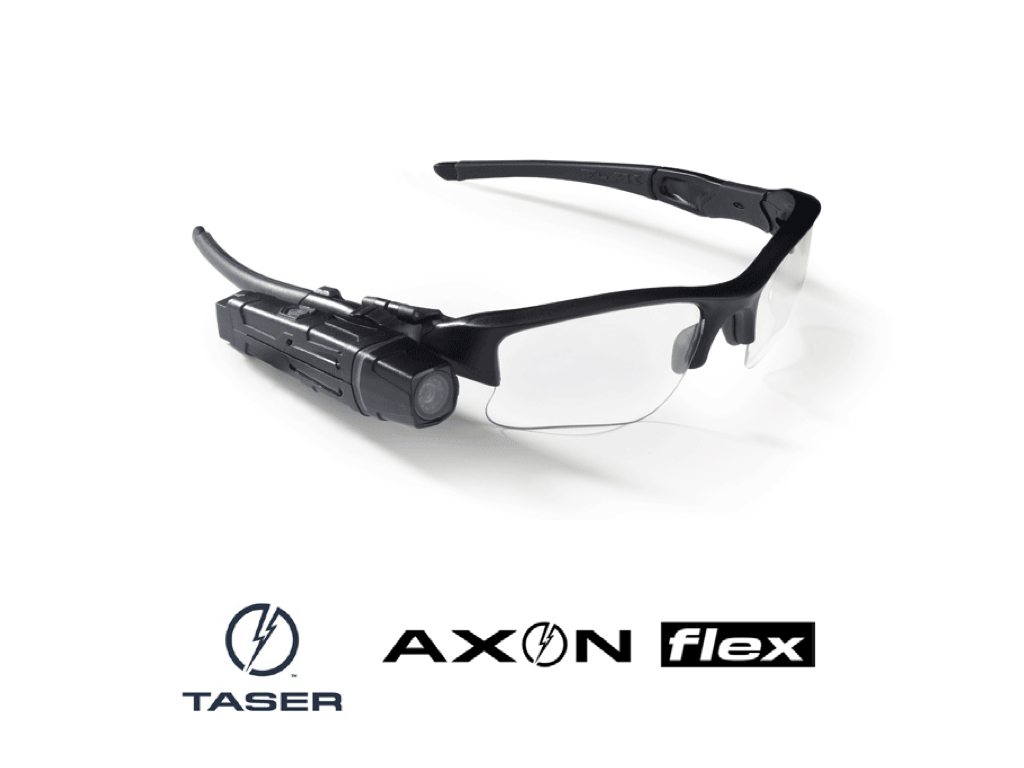
On their website homepage, taser is currently promoting their new product, not yet available, but clearly a Google Glass competitor in the Police market. With the extensive Taser distribution network, and sales force already in place, they are a real force in the category.
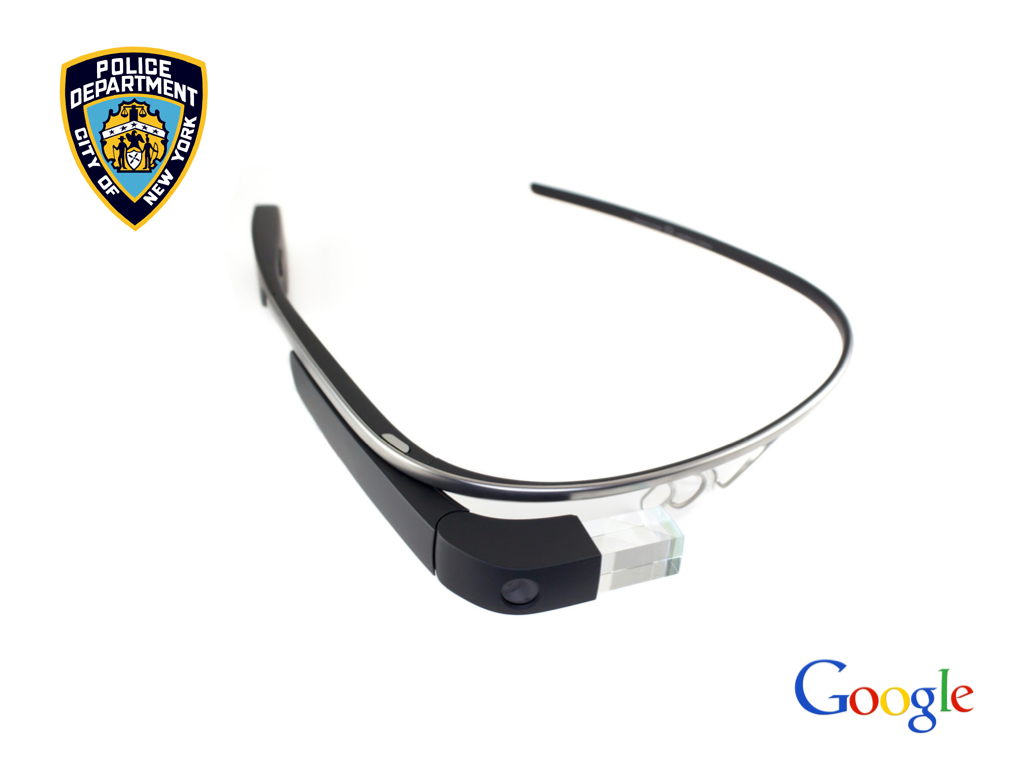
Google is playing catchup. Initially being “pulled into the market” by dash-cam software management companies like, “CopTrax, by Stalker” (… yes, that’s their real name) Google has now jumped in with their first case study in the space — partnering with our own NYPD. Expect to see some cops around town wearing Google Glass.
This is a good thing.
I bet they will be friendly when you see them.
Another reason to be optimistic.
There is no better disinfectant than the bright light of the sun — public oversight.
Sousveillance.

But what about the rest of us?
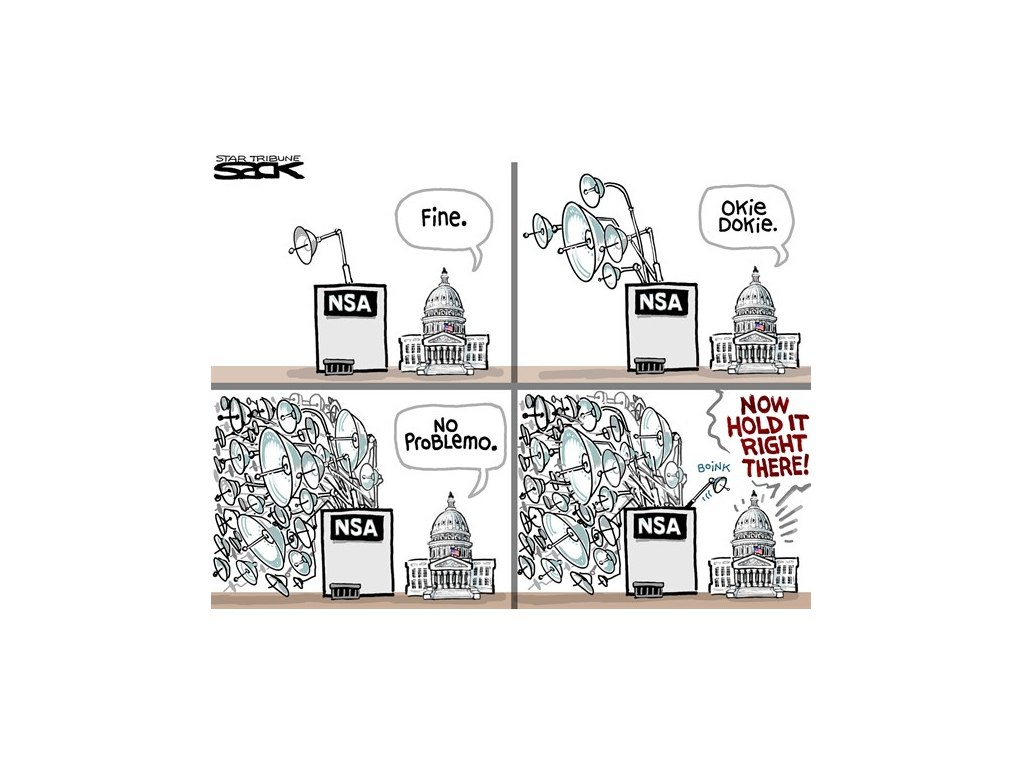
This cartoon is technically about the NSA. But it could serve well as an analogy …

Police don’t like to be filmed or photographed on the job. I don’t have statistics, but anecdotally, I know of cases in all of these states shown where either people have been arrested for the supposed crime of filming cops (usually while using “force”) [CA], [IN], [MI], [TN], [MA], or where state legislation has been passed making it illegal to film police, punishable by fines and/or prison [VA], [IL].
 |
||
 |
 |
|
 |
||
And why would anyone want to film the police?
Rodney King is interesting primarily because it was caught on video.
It is not as though allegations of such behavior had not been reputed before. But we came to an intersection where the cost of conveniently portable camcorders were cheap enough and ubiquitous enough that actual evidence was captured on video.
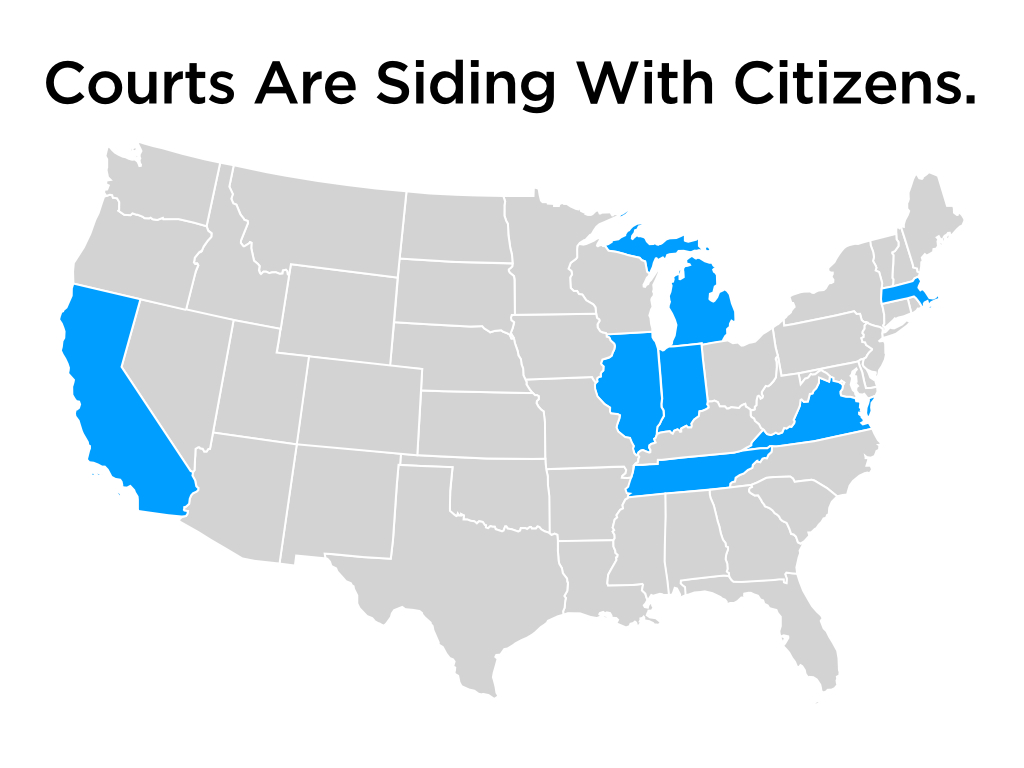
This map is also interesting because it appears to have greater correlation to corrupt state governments than it does to party allegiance.
But even here, we have nothing but good news.
In spite of attempt to obfuscate on the part of a small number of states, courts are again ruling against the police. State laws in Virginia and Illinois have both been struck down as unconstitutional by Federal courts. Though they continue pursuing a few dead-end legal avenues (we should all remain vigilant), none the less, the United States Seventh Circuit Court of Appeals has ruled Illinois state law to be unconstitutional. Furthermore, when the state of Illinois appealed to the Supreme Court, SCOTUS declined, leaving the appeals court ruling standing as the highest legal precedent on the matter.
Since arresting Willie King for filming police in Indianapolis, Indiana, the arrest has been shot down, and Willie won a $200,000.00 civil suit against the city. Not only did the arrest not stick, but the state of Indiana is now required to train their police that it is the right of any citizen to record them while on duty (a requirement of the settlement).
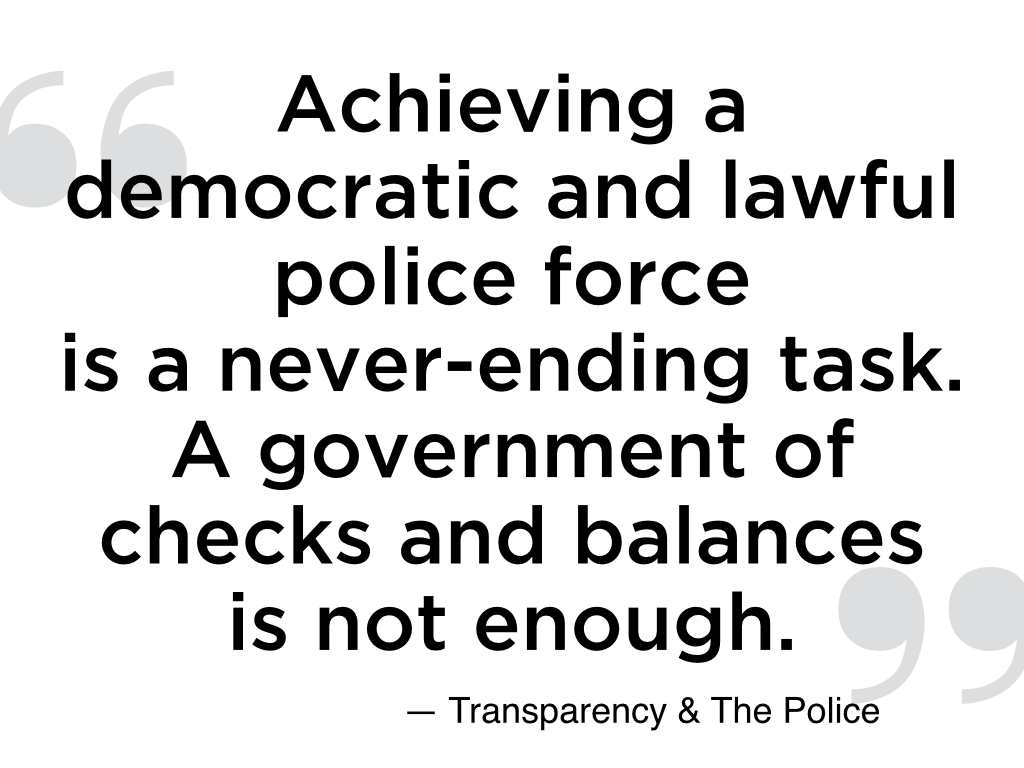
William McDonald, Professor of Sociology at Georgetown, and co-director, Institute of Criminal Law and Procedure, has written a white paper titled “Transparency & The Police.” In it he documents corruption and use of excessive force in police departments from Mexico to Eastern Europe.
One thing is resoundingly clear, nothing deescalates a police interaction with the populace like the presence of cameras or the presumption that the police were being recorded.
It also exposed a weakness in police training — while the Federal Government has been supplying armored vehicles, bullets, riot-gear and all other imaginable military grade kit to police far and wide, they’ve provided little to no training in defusing, deescalating and dispute arbitration.
While the problem is more systemic than the proverbial “few bad apples” it is solvable through a combination of improved training, better policy, and ubiquitous adoption of wearable cameras for rigorous oversight.

The aforementioned Steve Mann has lobbied for legislation that would protect everyone’s right to document their own immediate surrounding, by way of video record, specifically arguing for transparency in the event of a dispute.

In 2012, Steve was the coauthor of a proposed bill in the New York State Legislature that would have done just that. Though it did not pass, I predict this to be a battle that gets waged across several legal fronts (probably in many states) before it becomes settled law.

I would extend Mann’s proposal to require all police to wear a camera, and document all interactions, when interfacing with citizens.

I would also extend that proposal to include private armed security personnel as well.

Dead men don’t talk.
I would prefer not to suggest that if George Zimmerman had worn a camera that his trial would have had greater transparency, but rather that if George Zimmerman had worn a camera perhaps tension would have deescalated, and we would have no reason to ever know of this tragedy avoided.
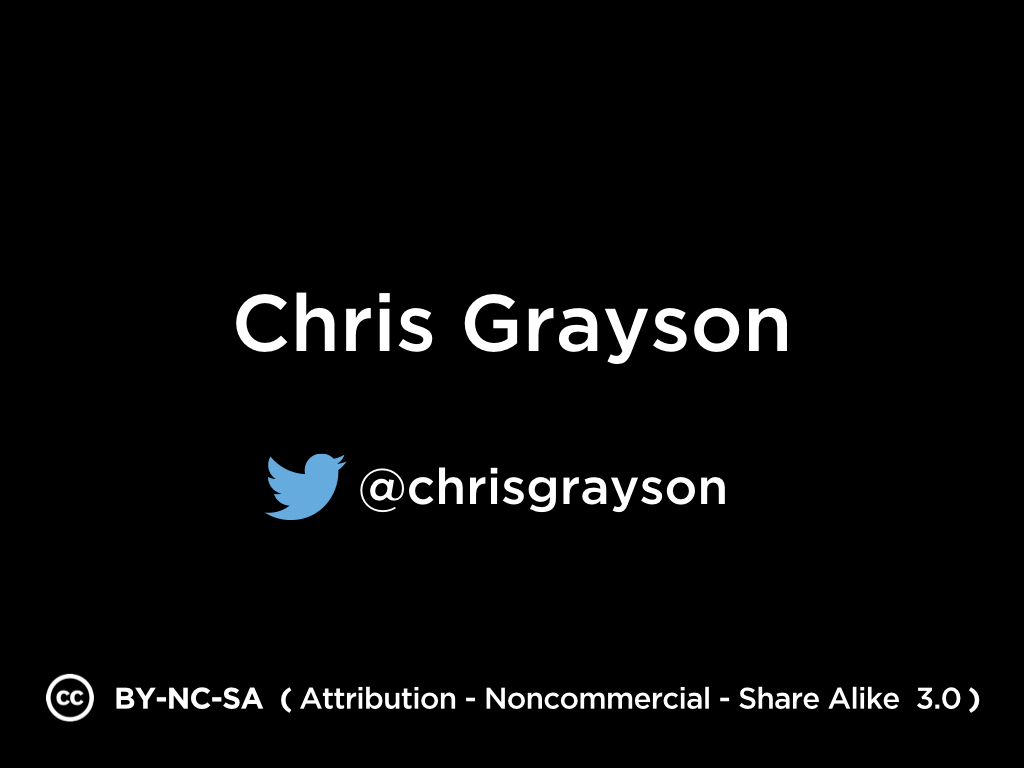
Thank you.

